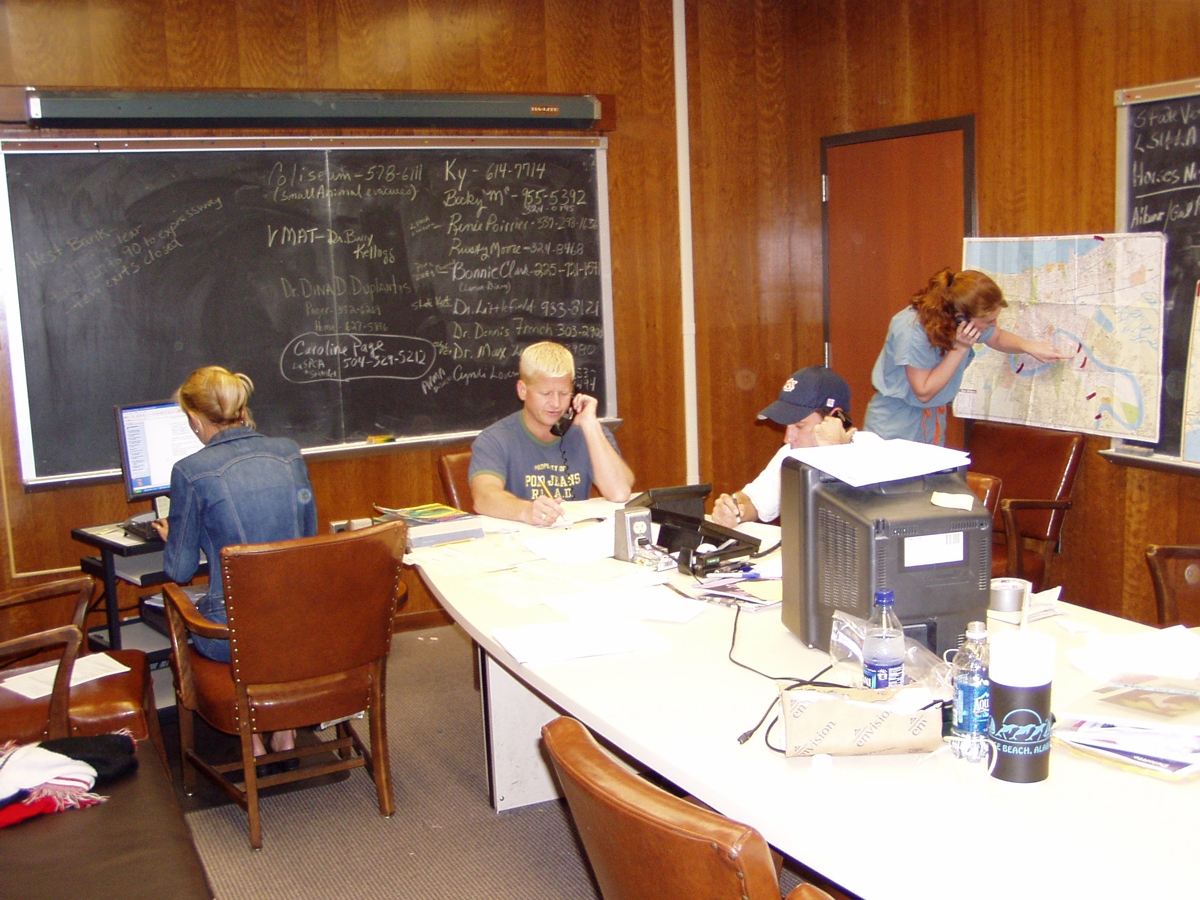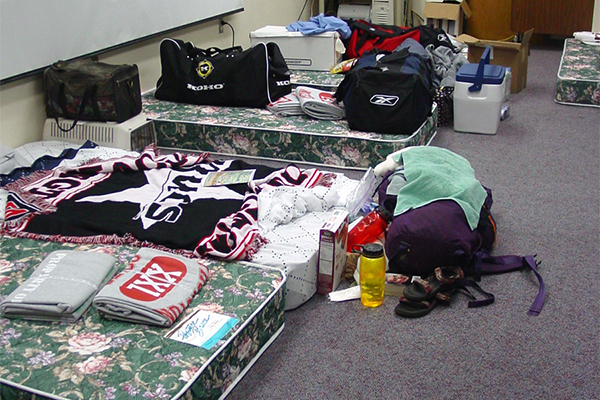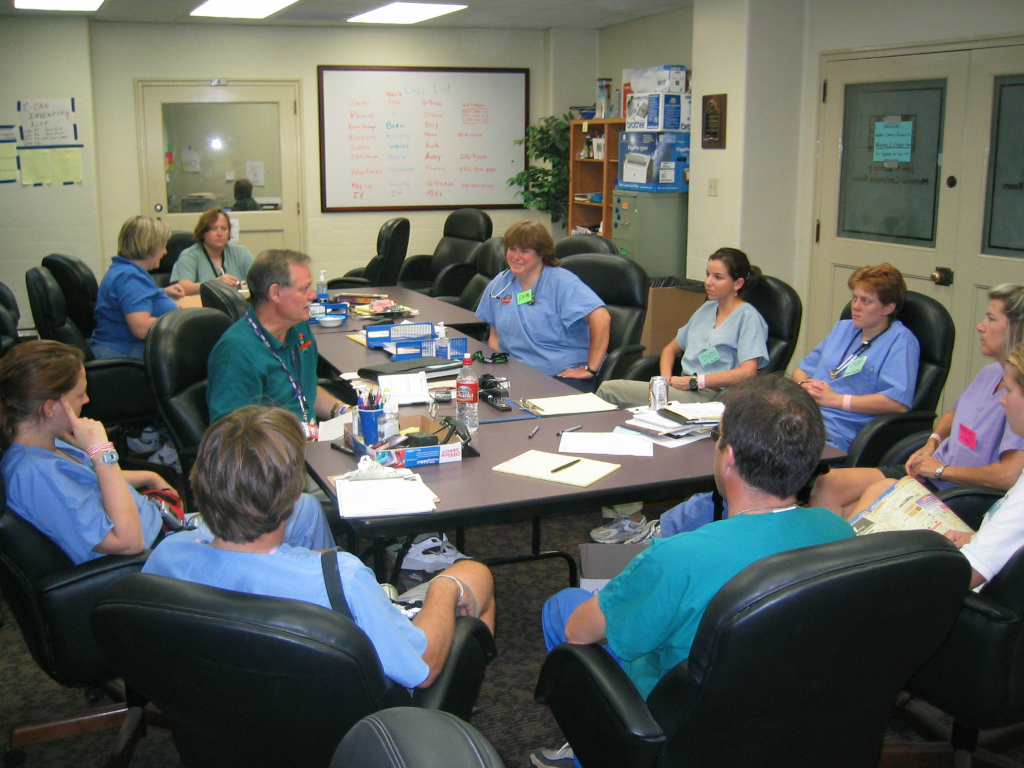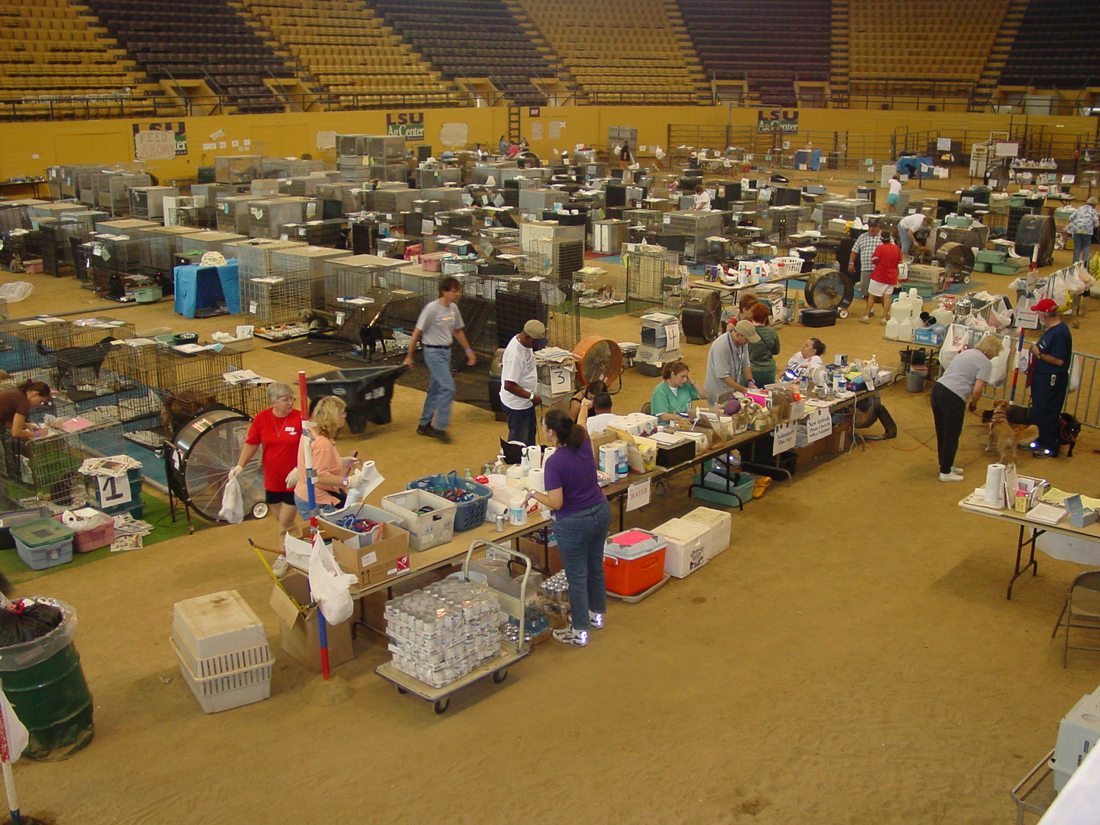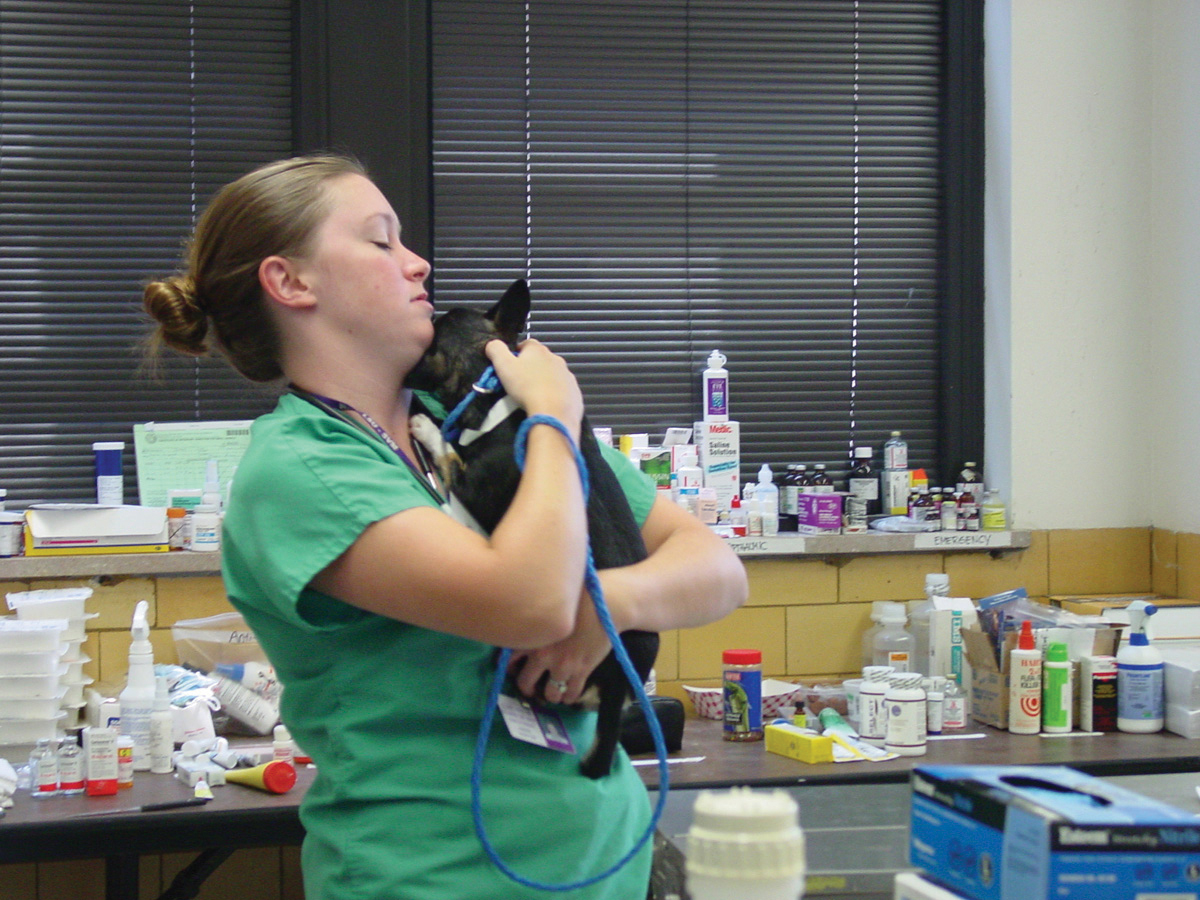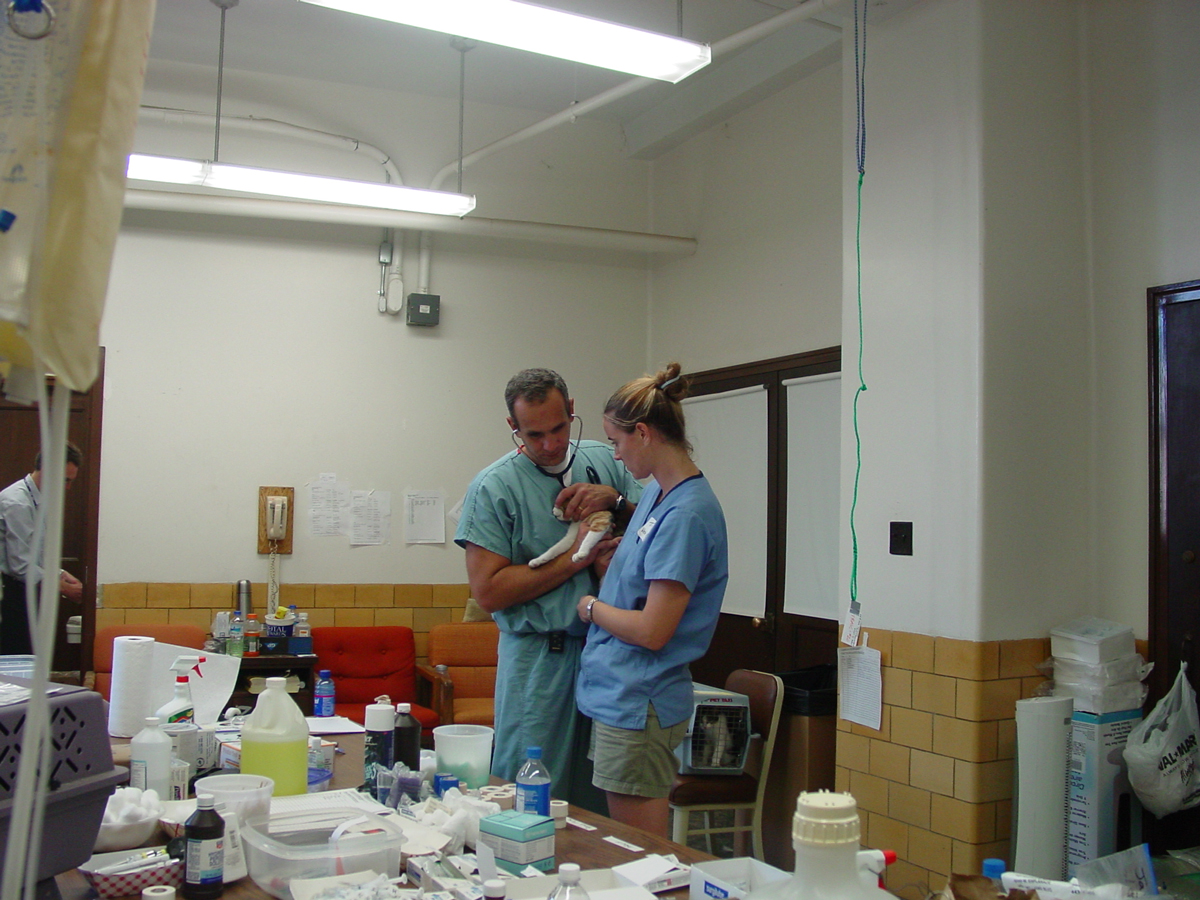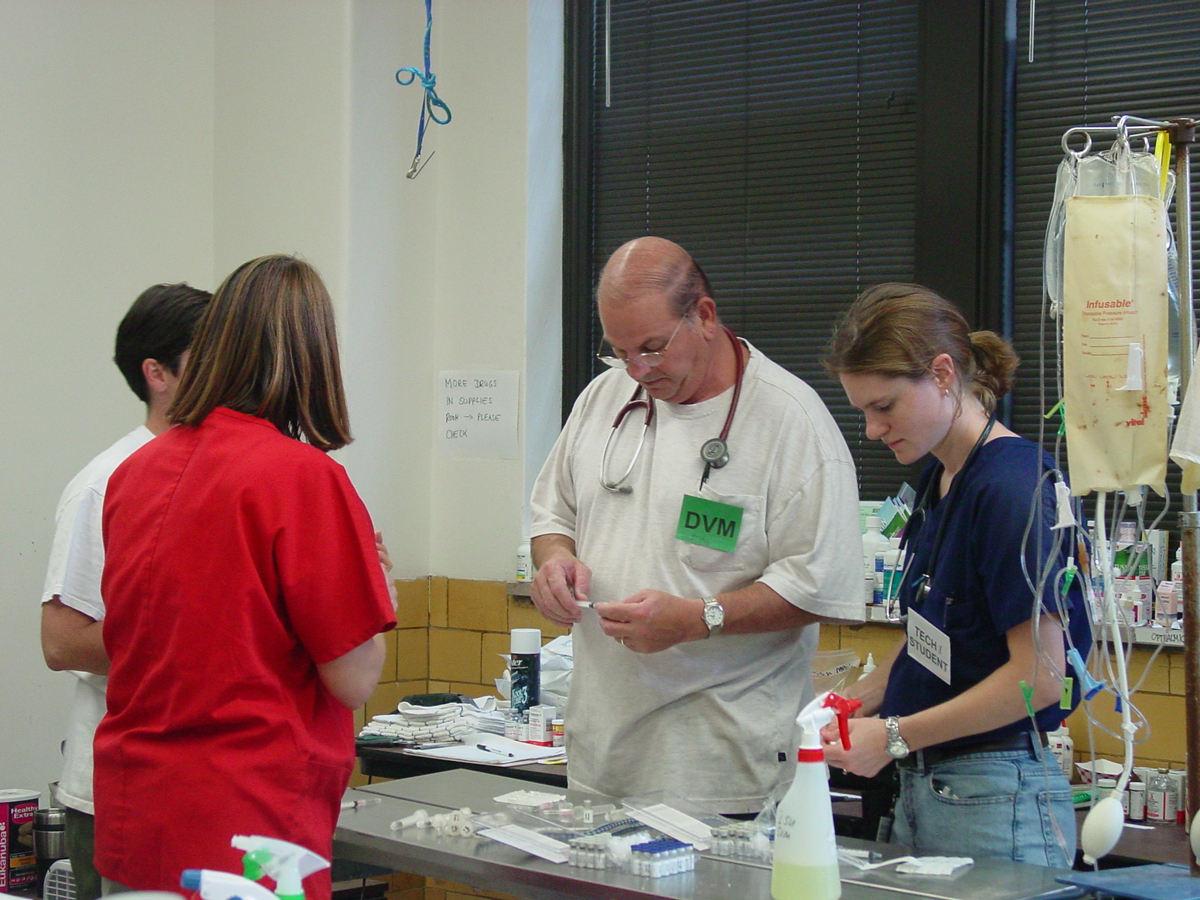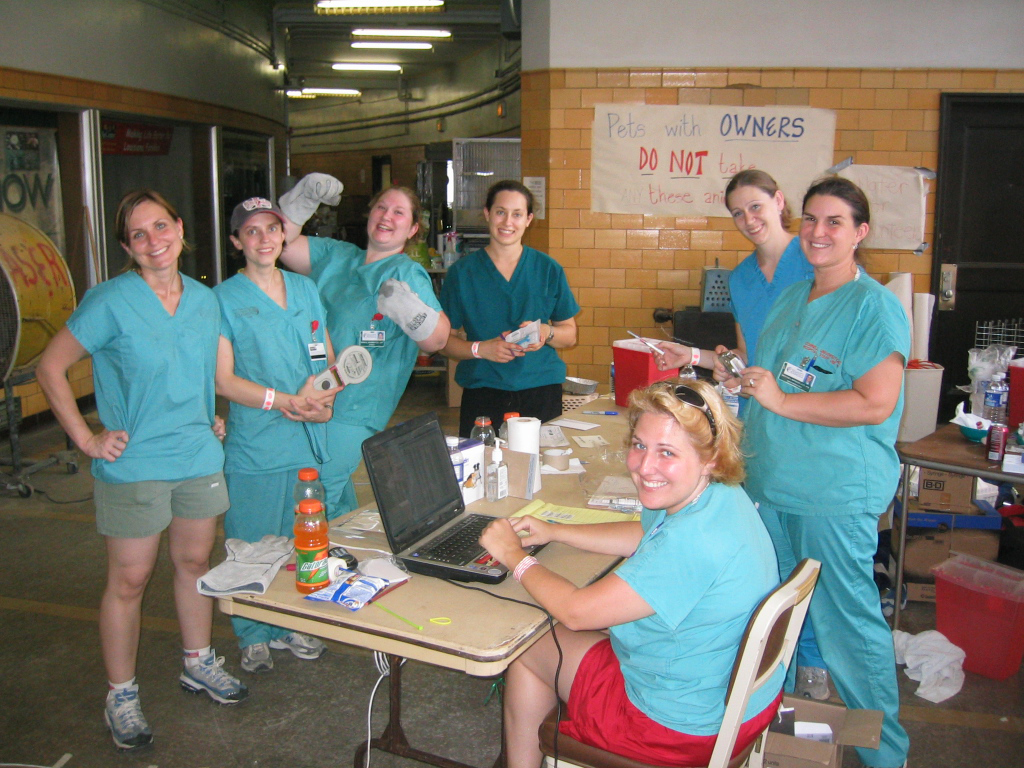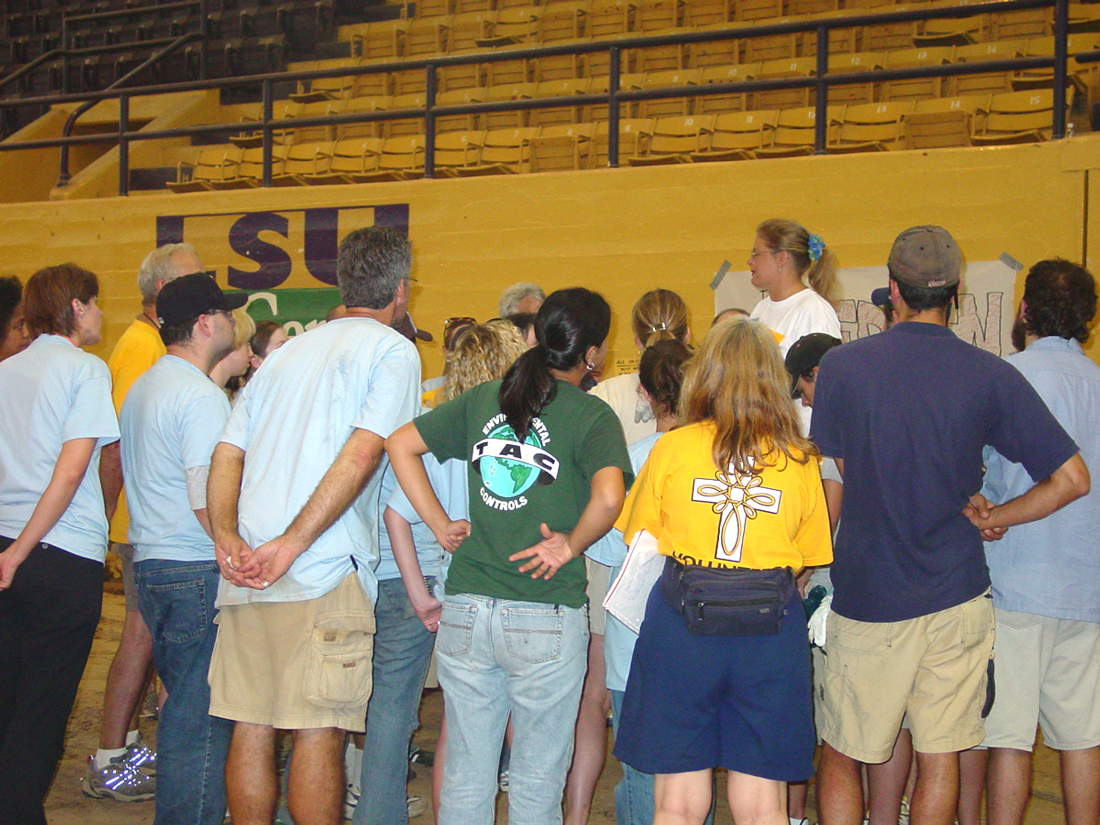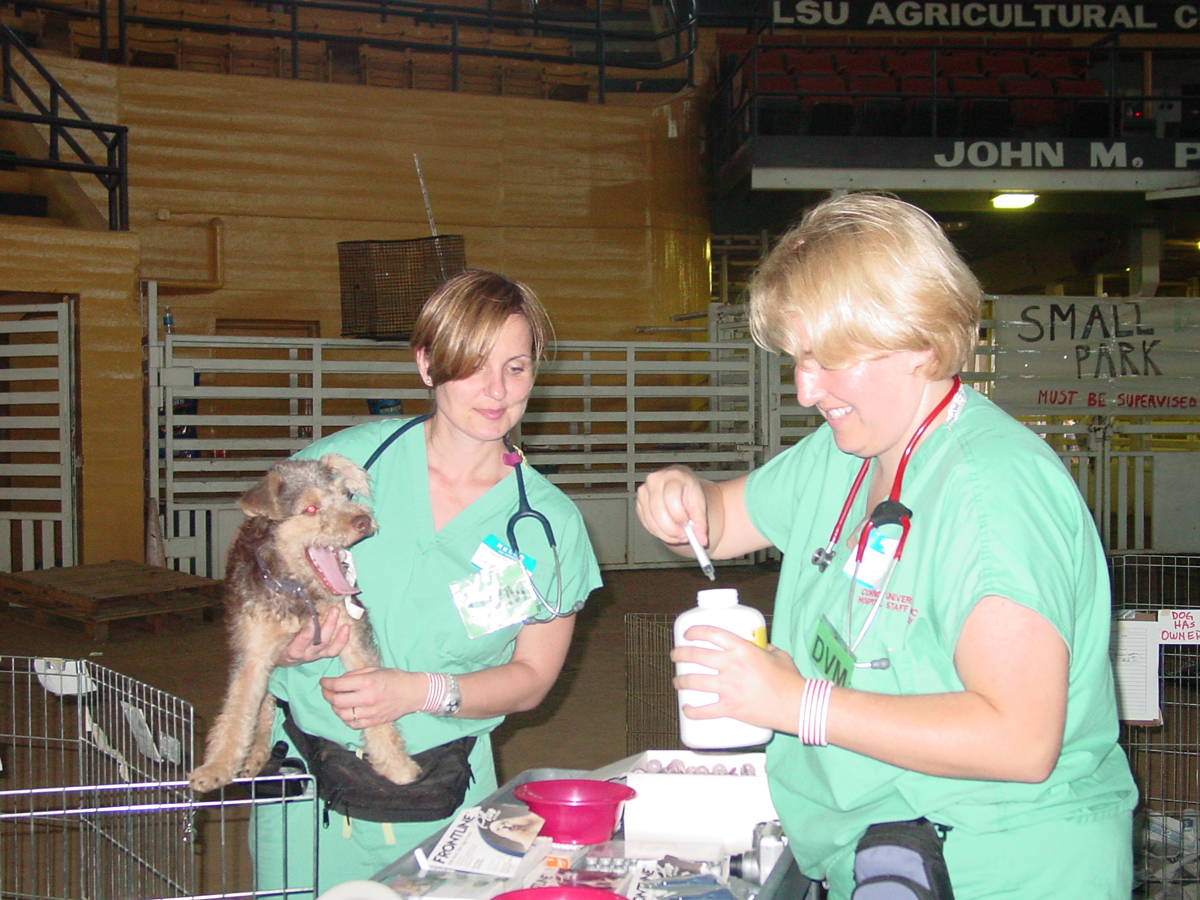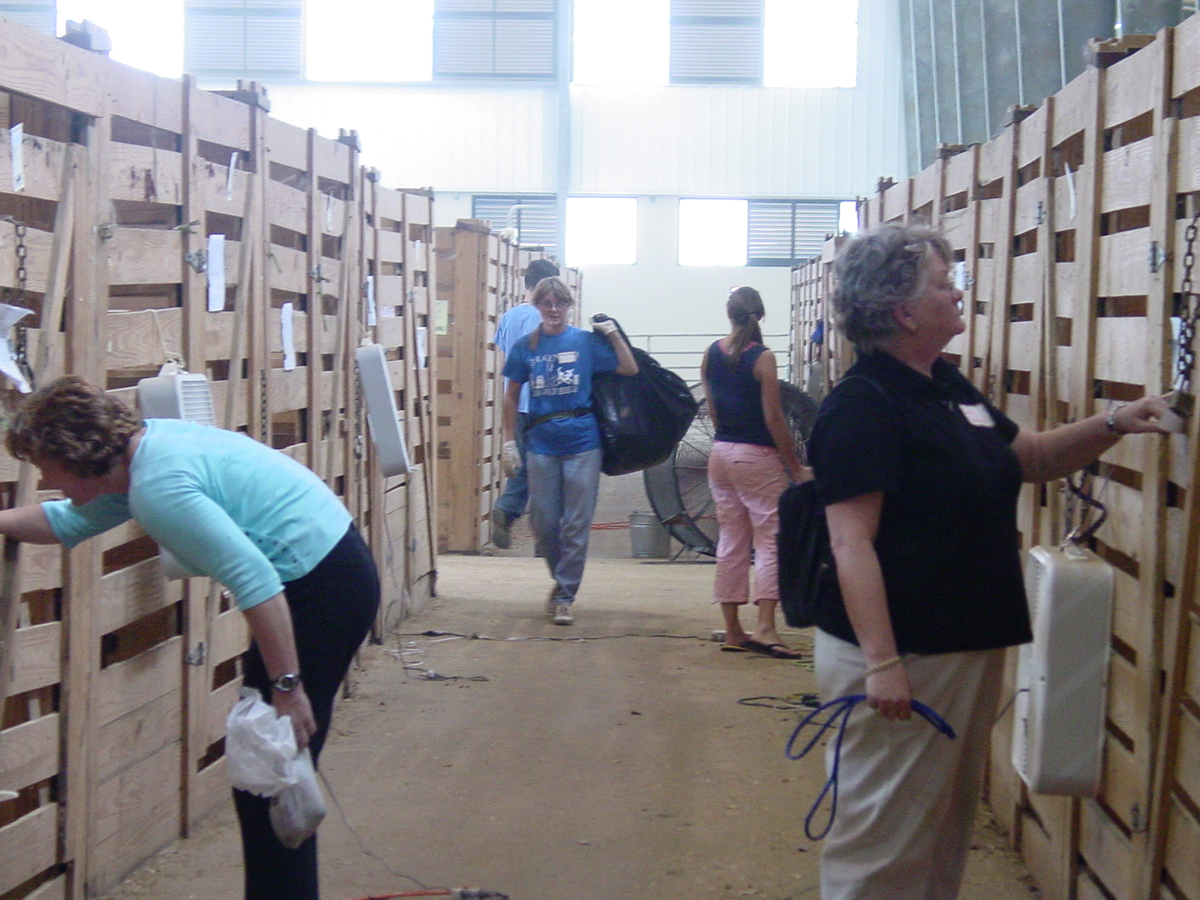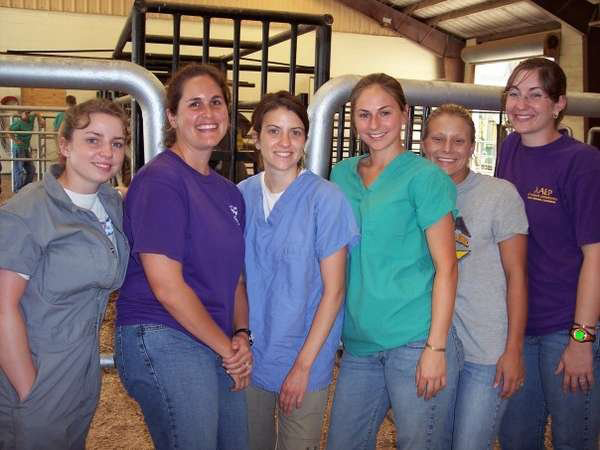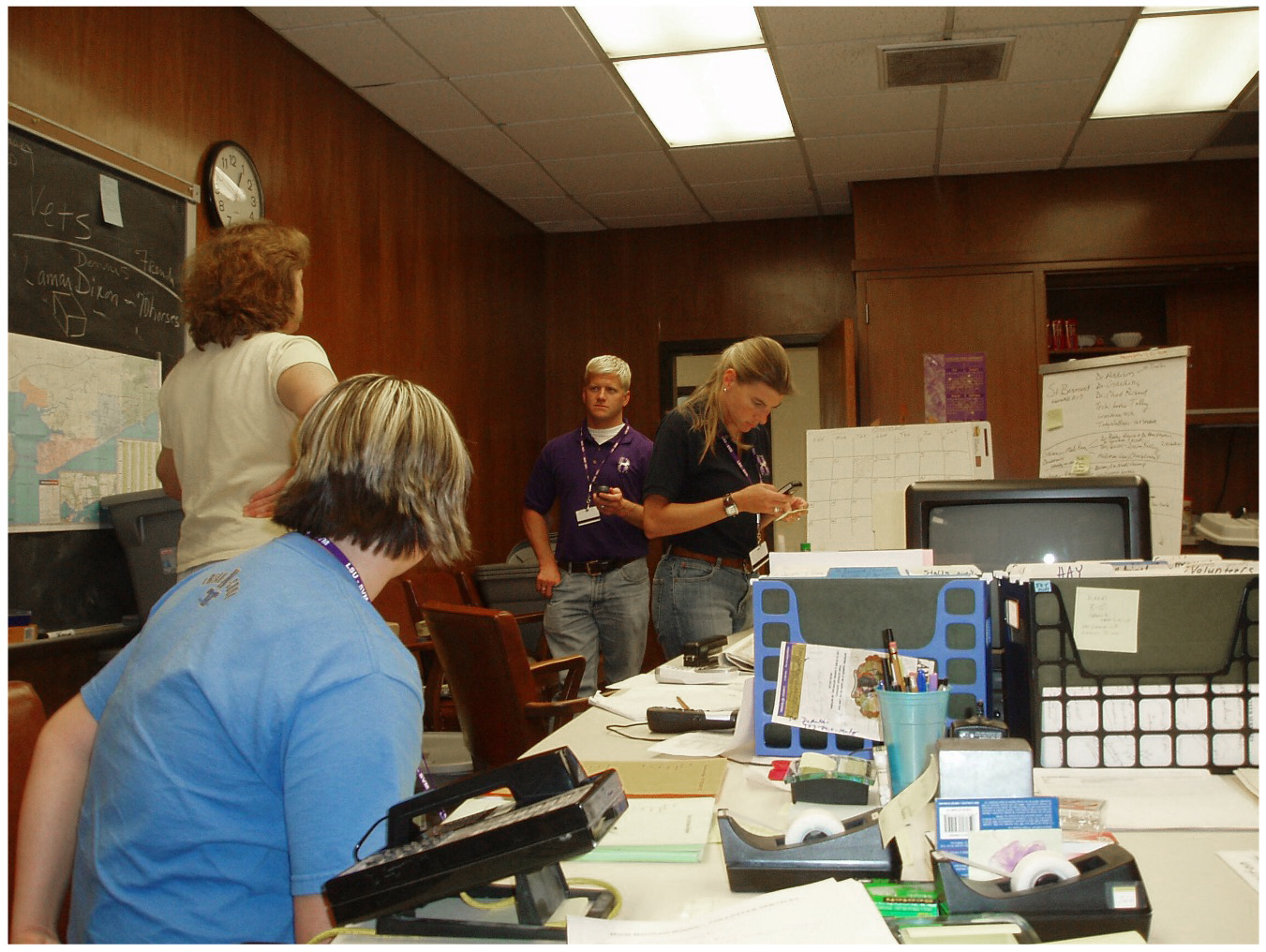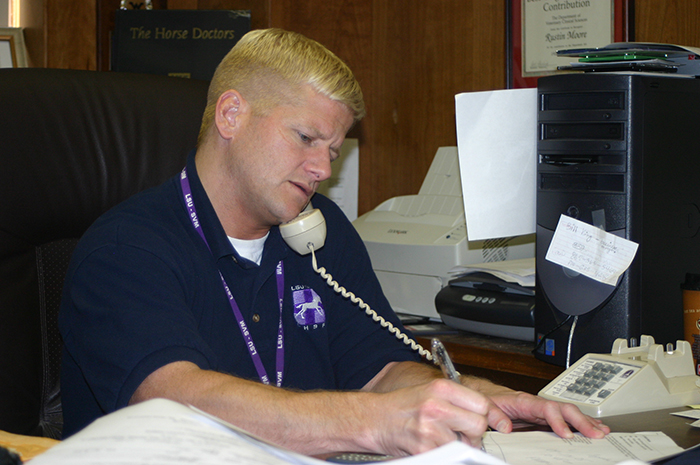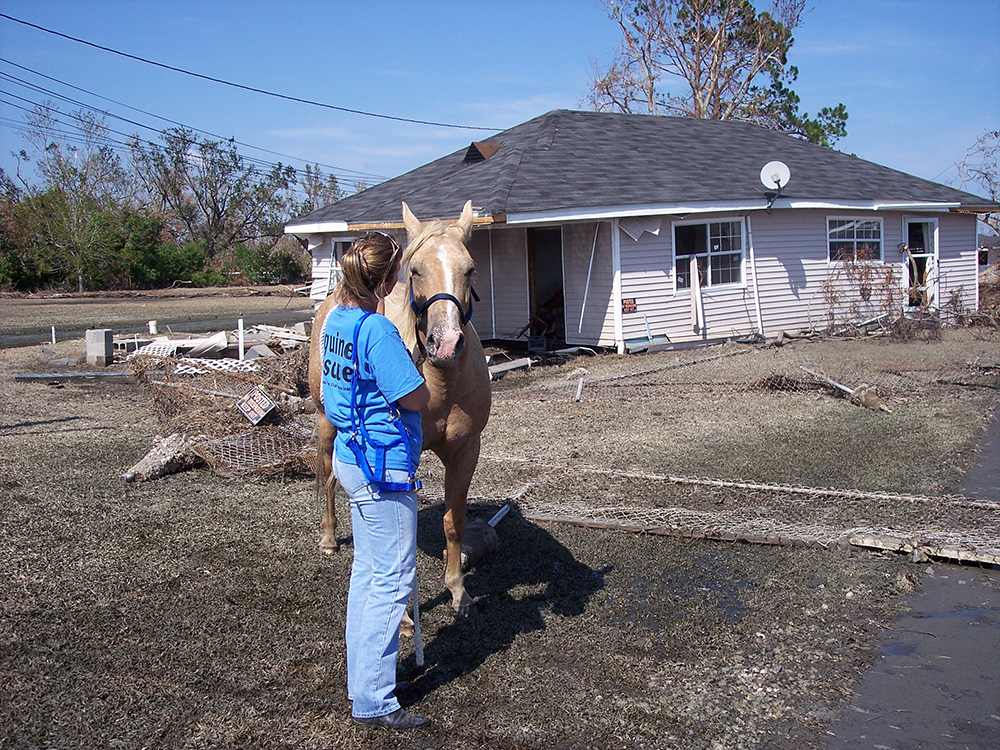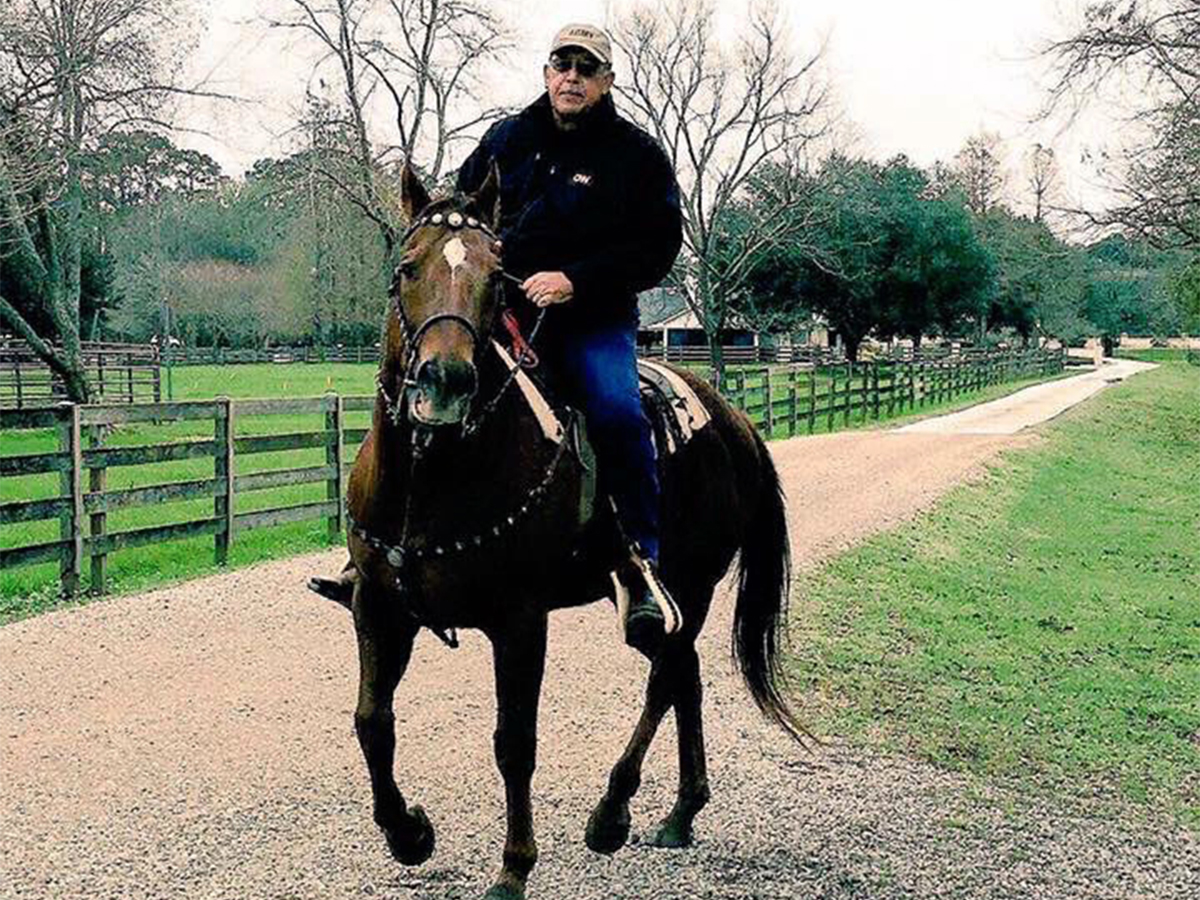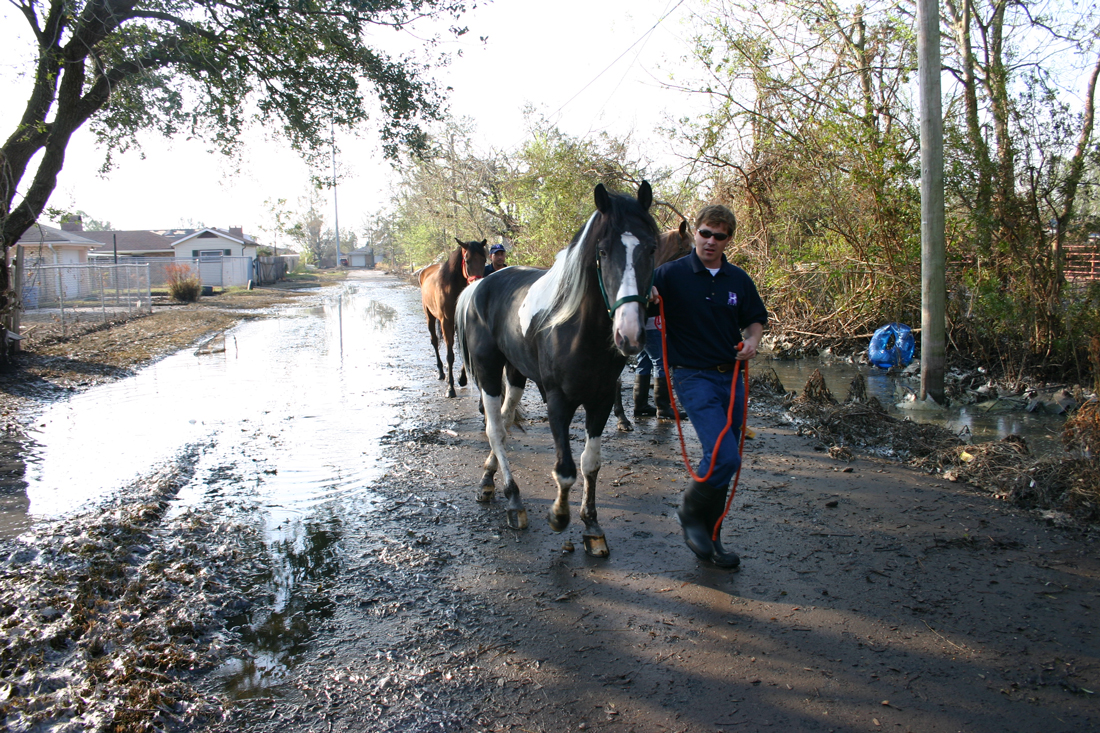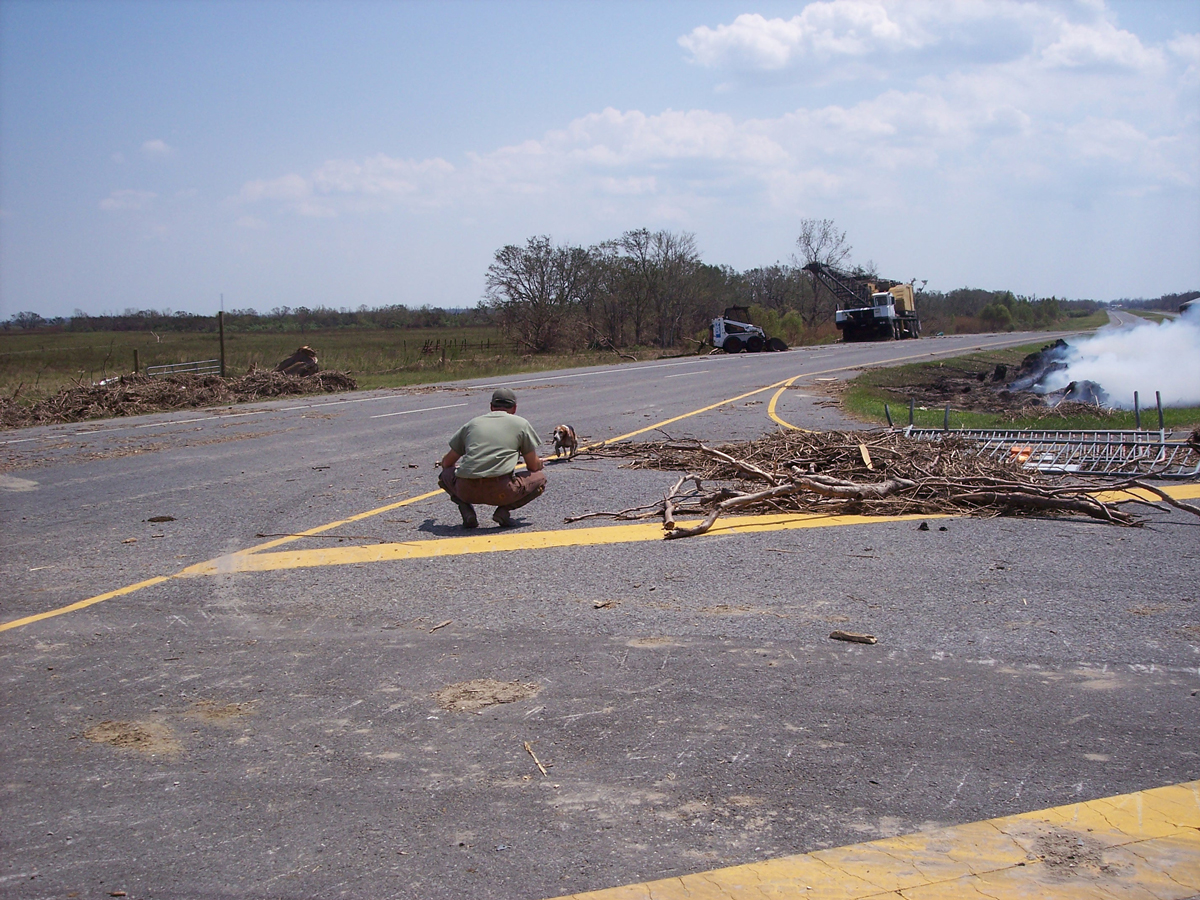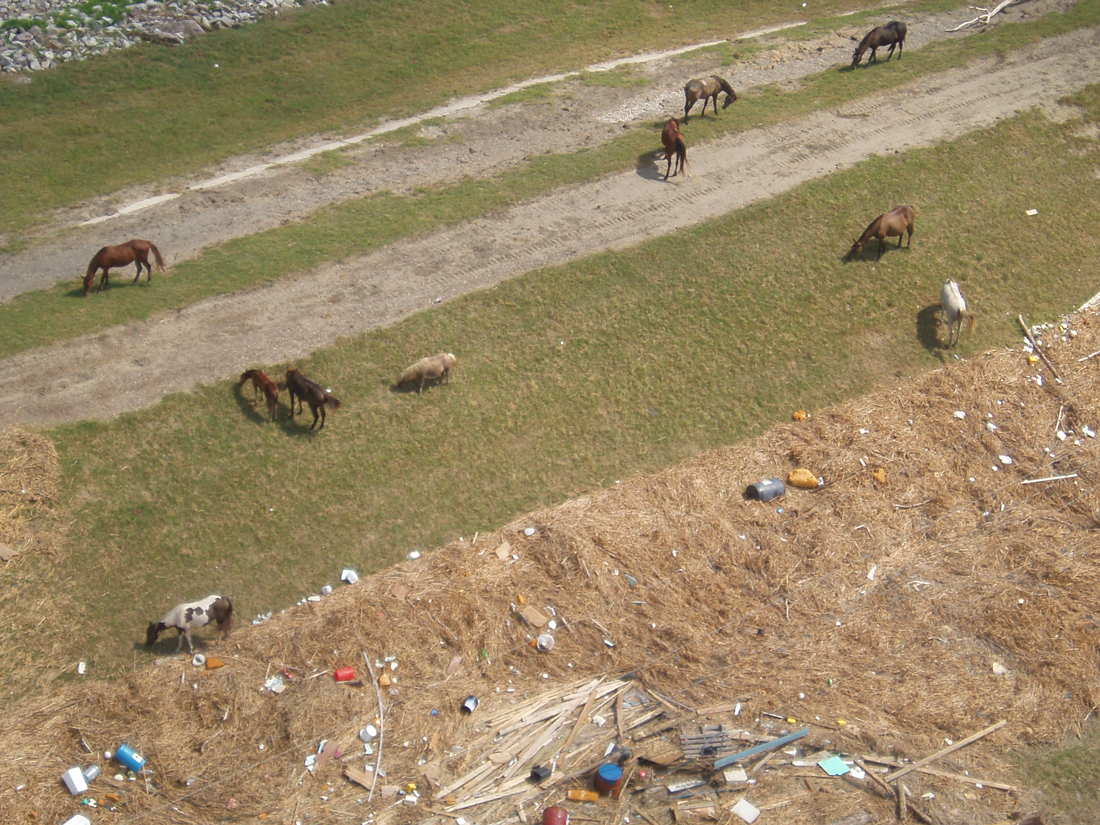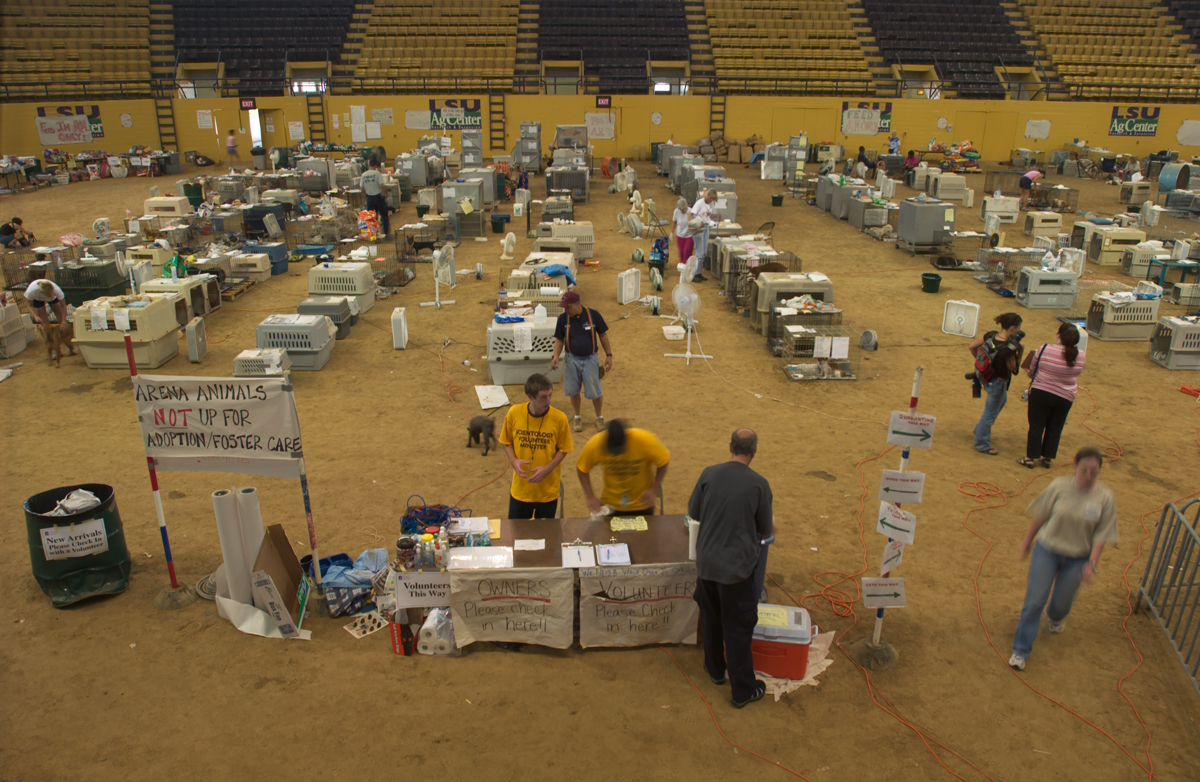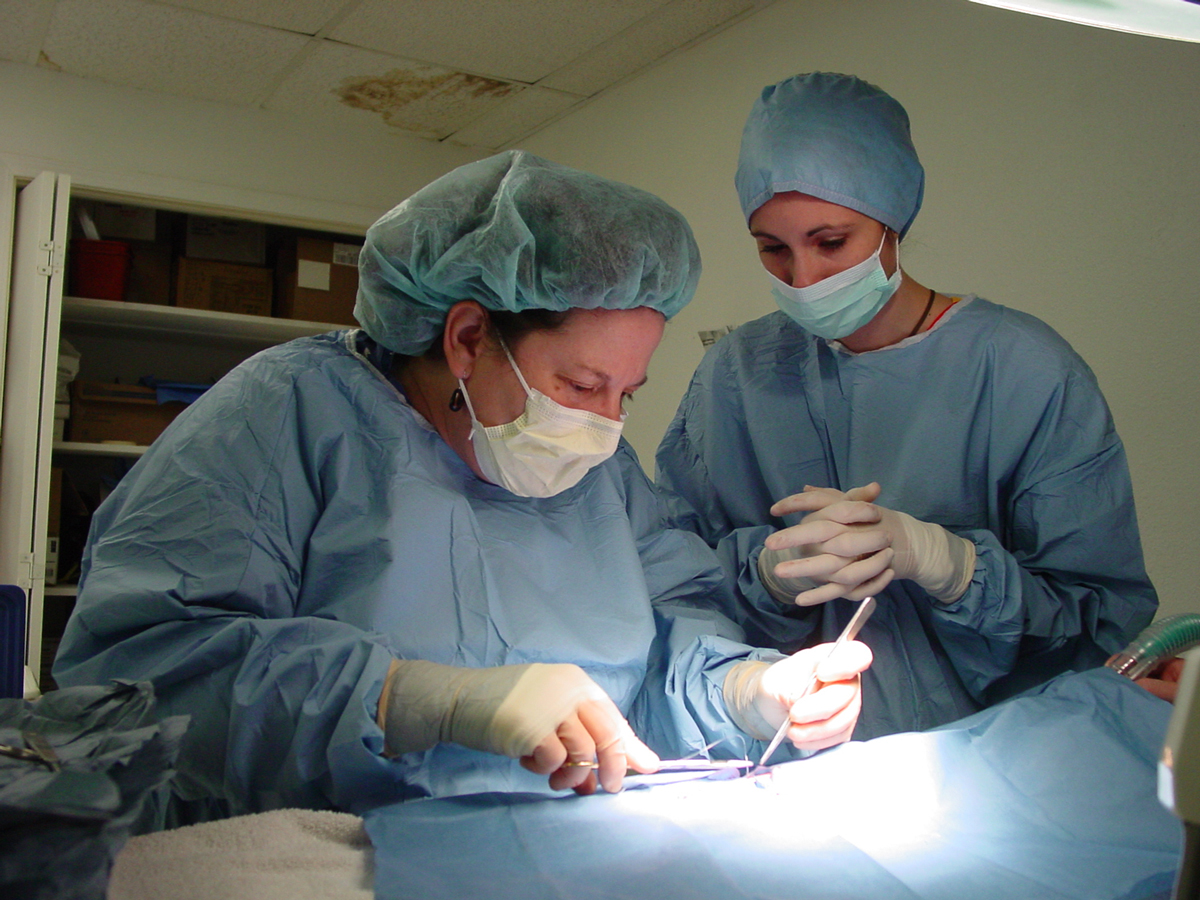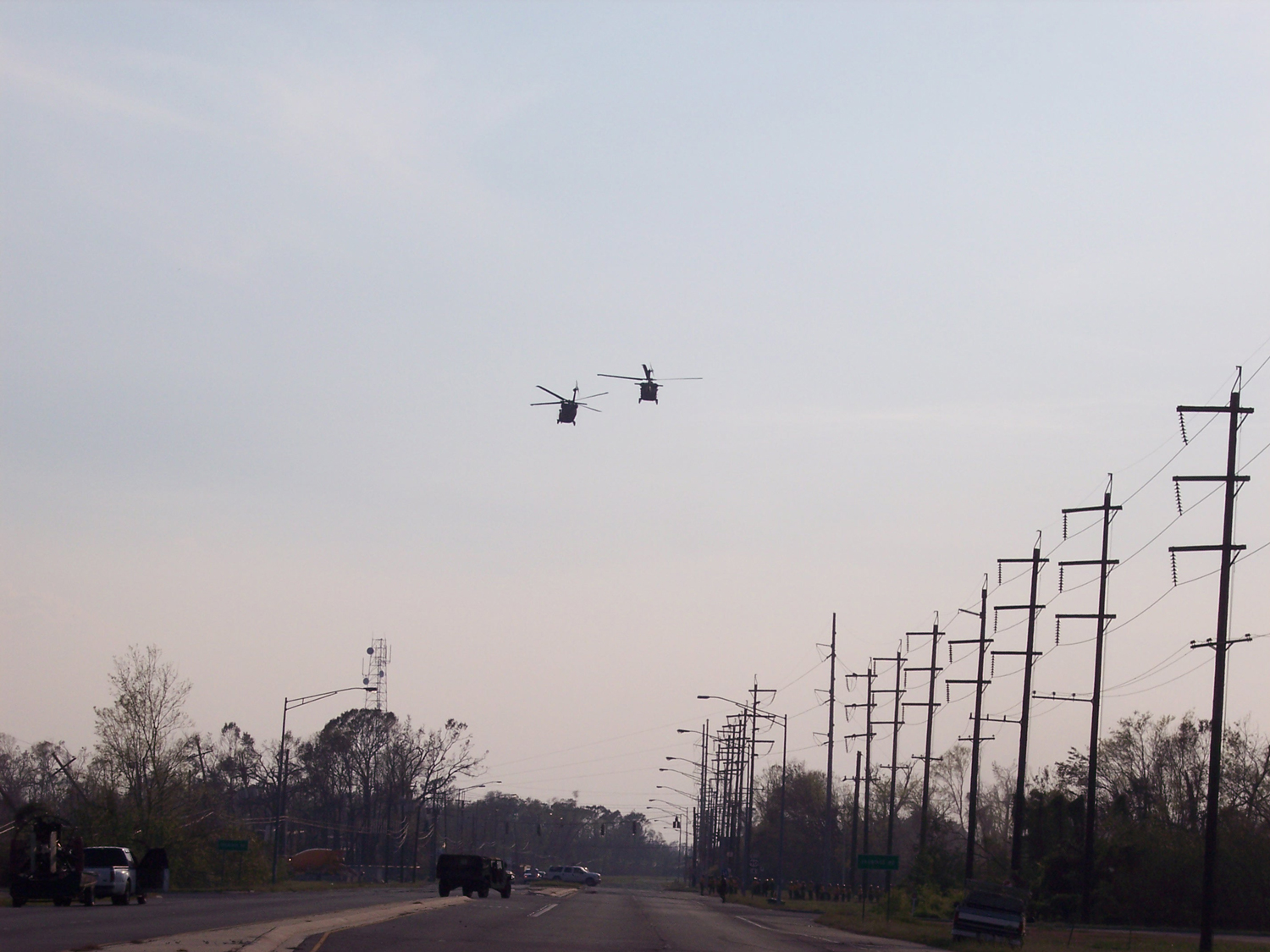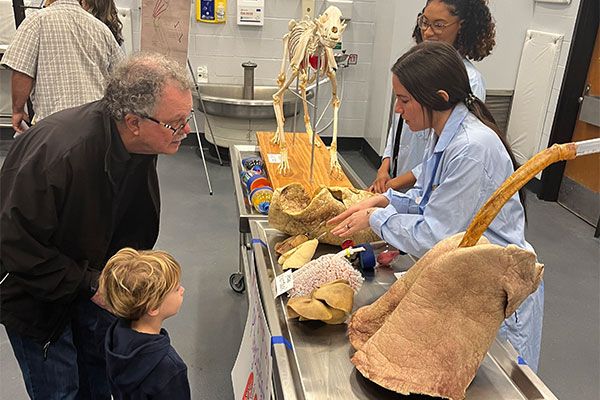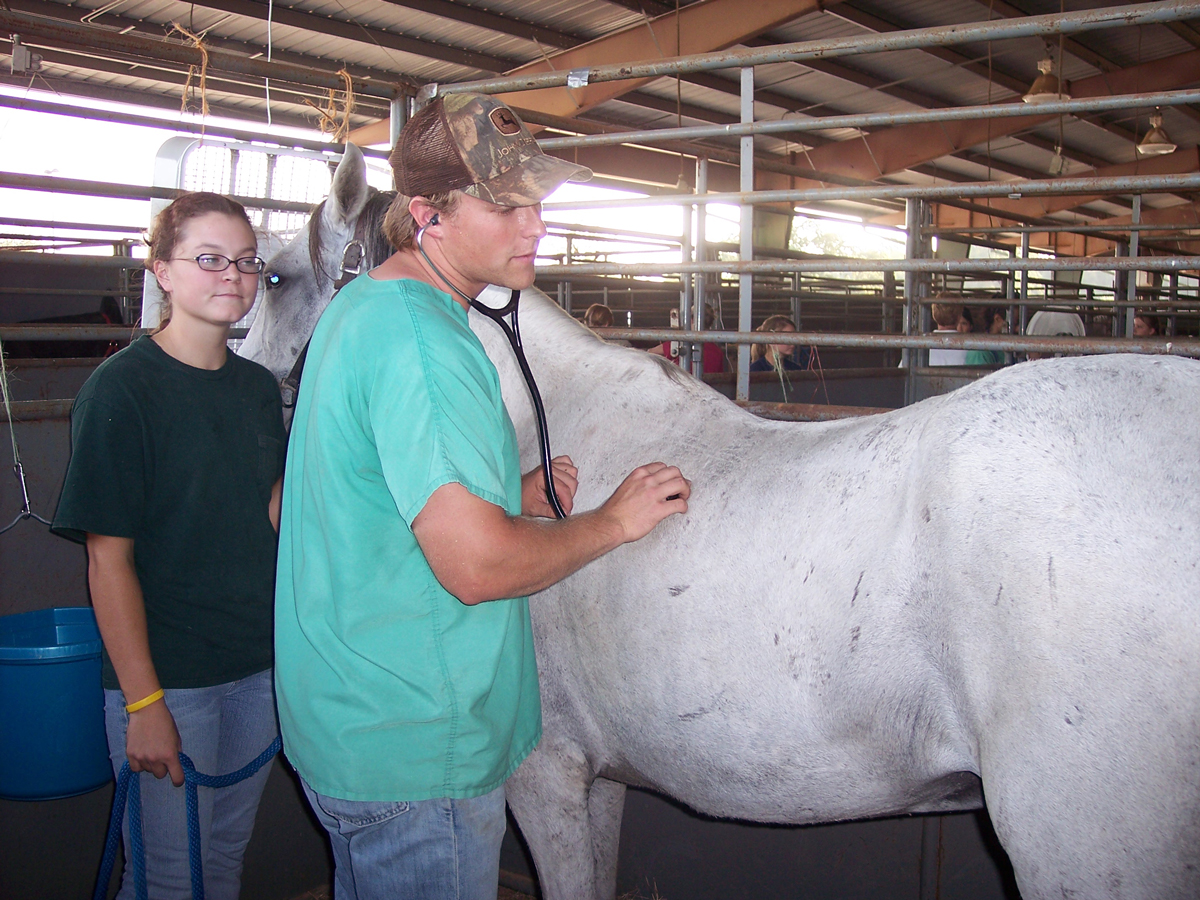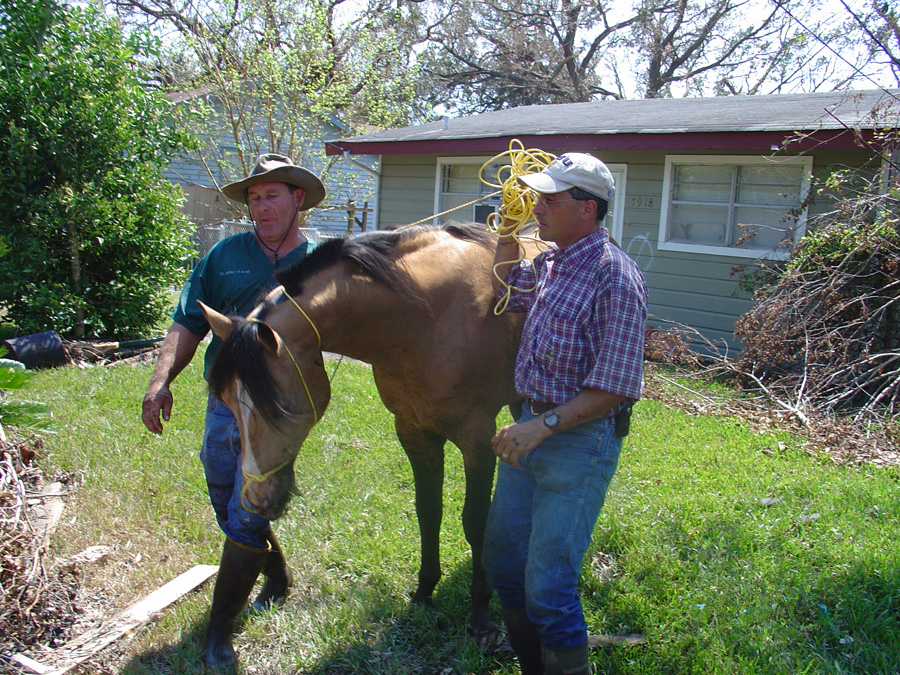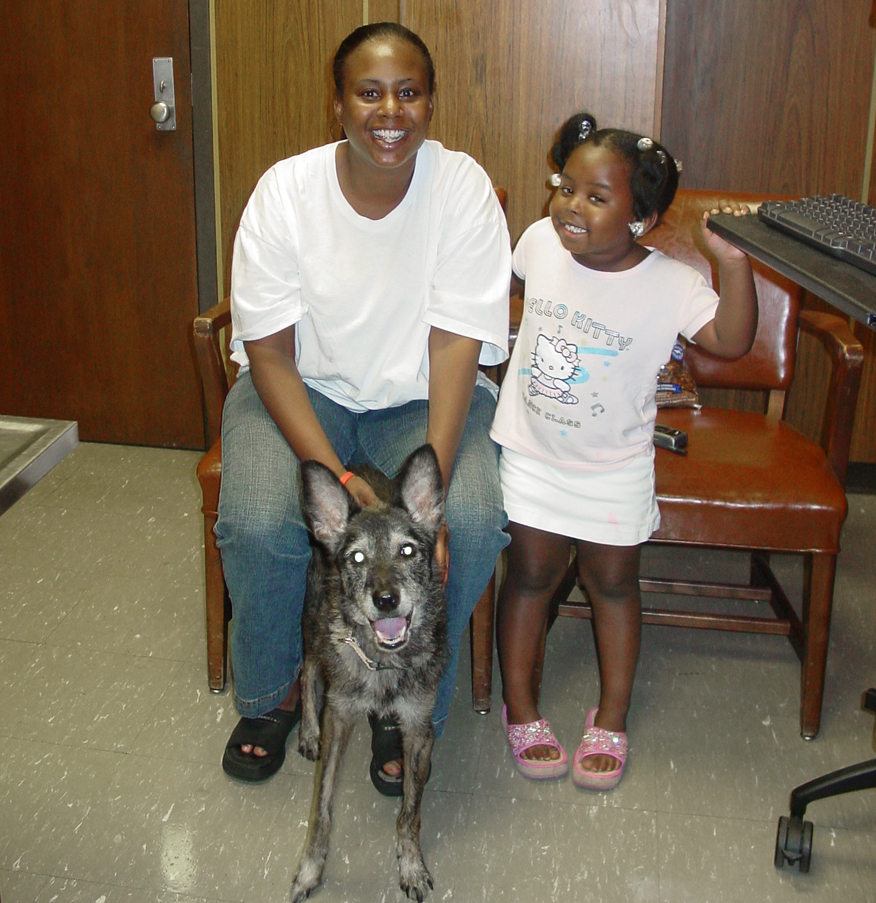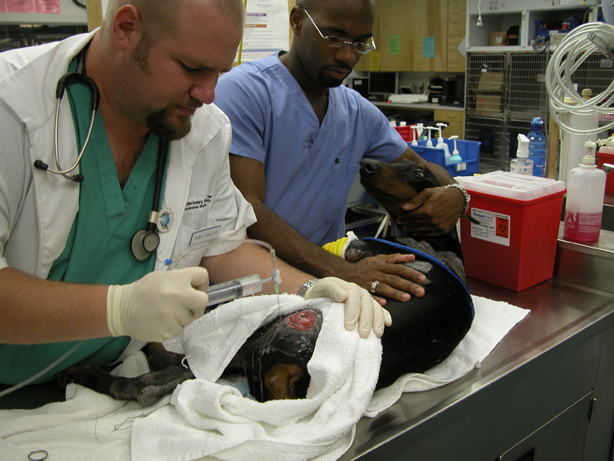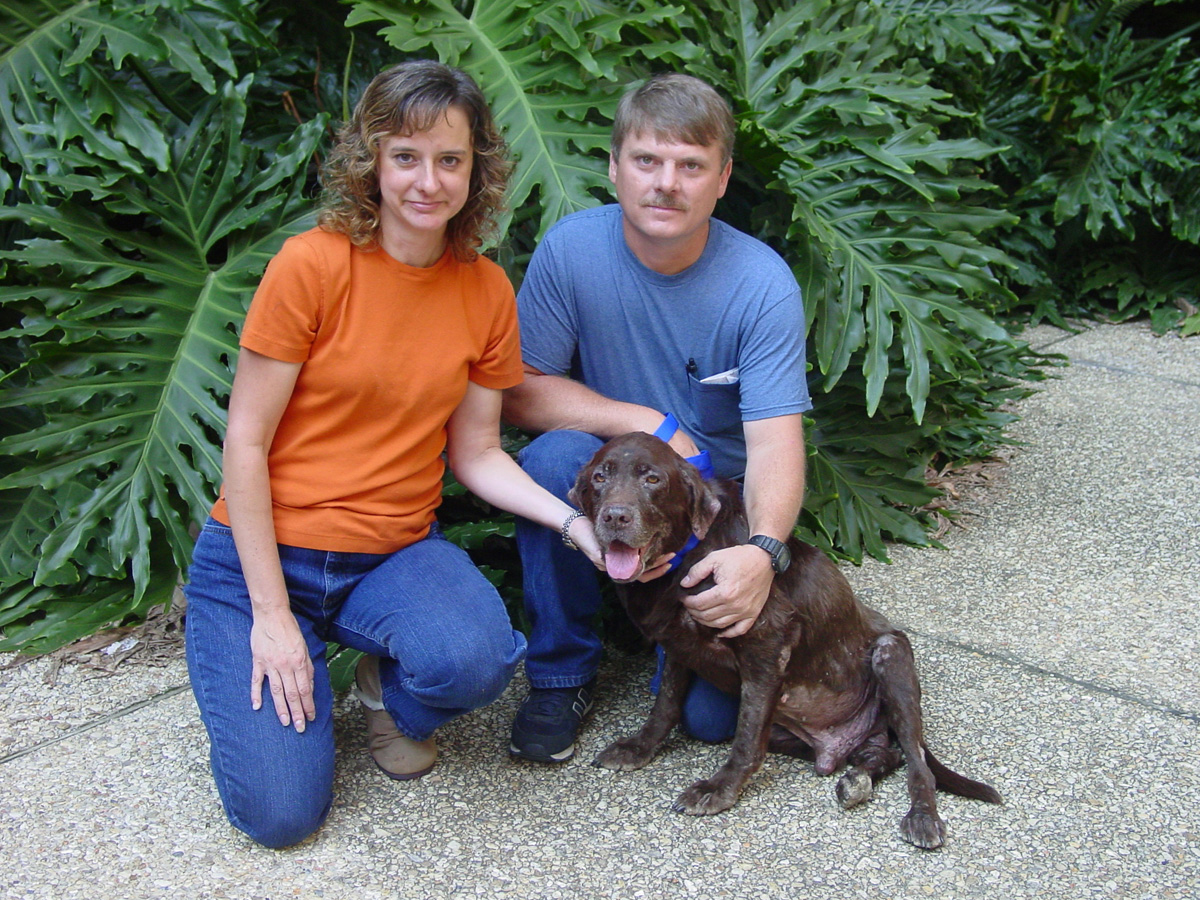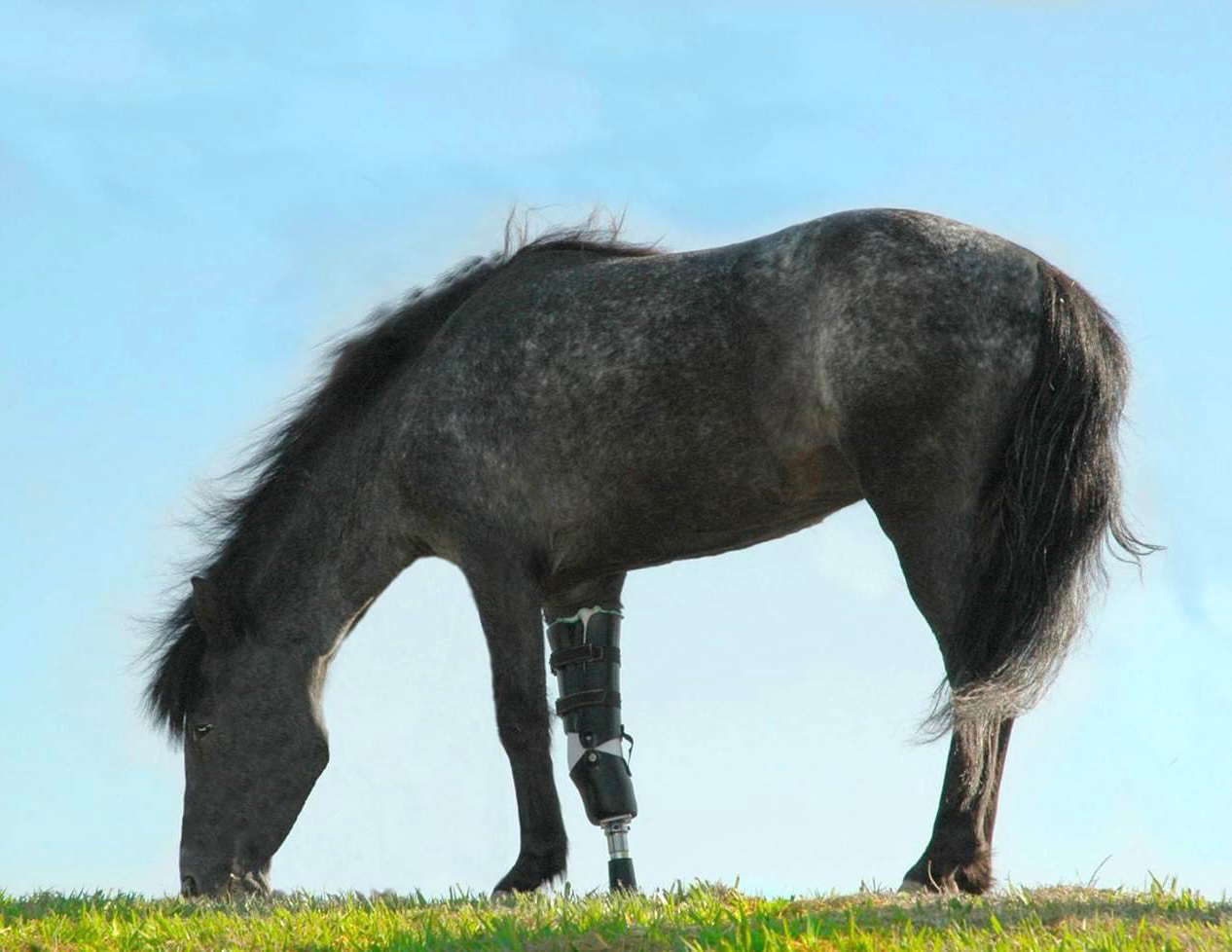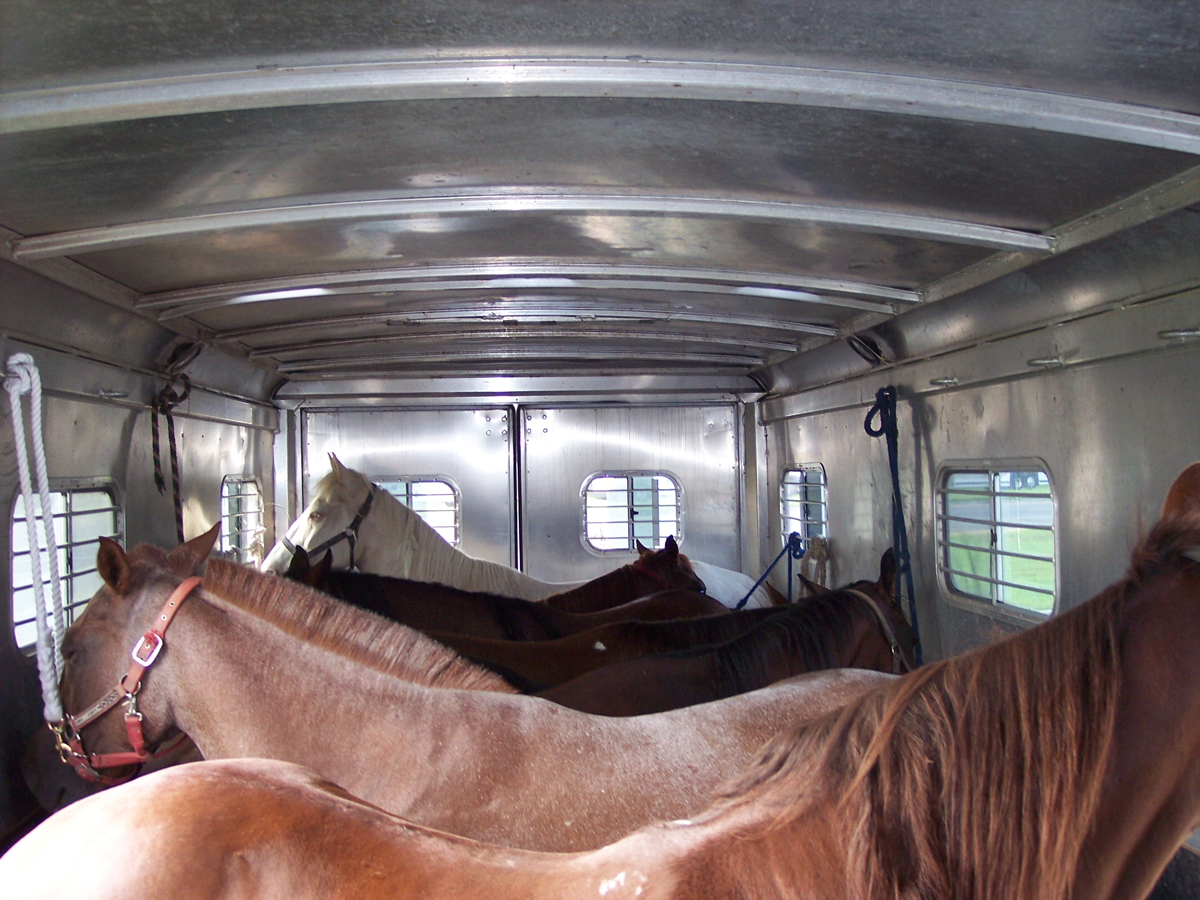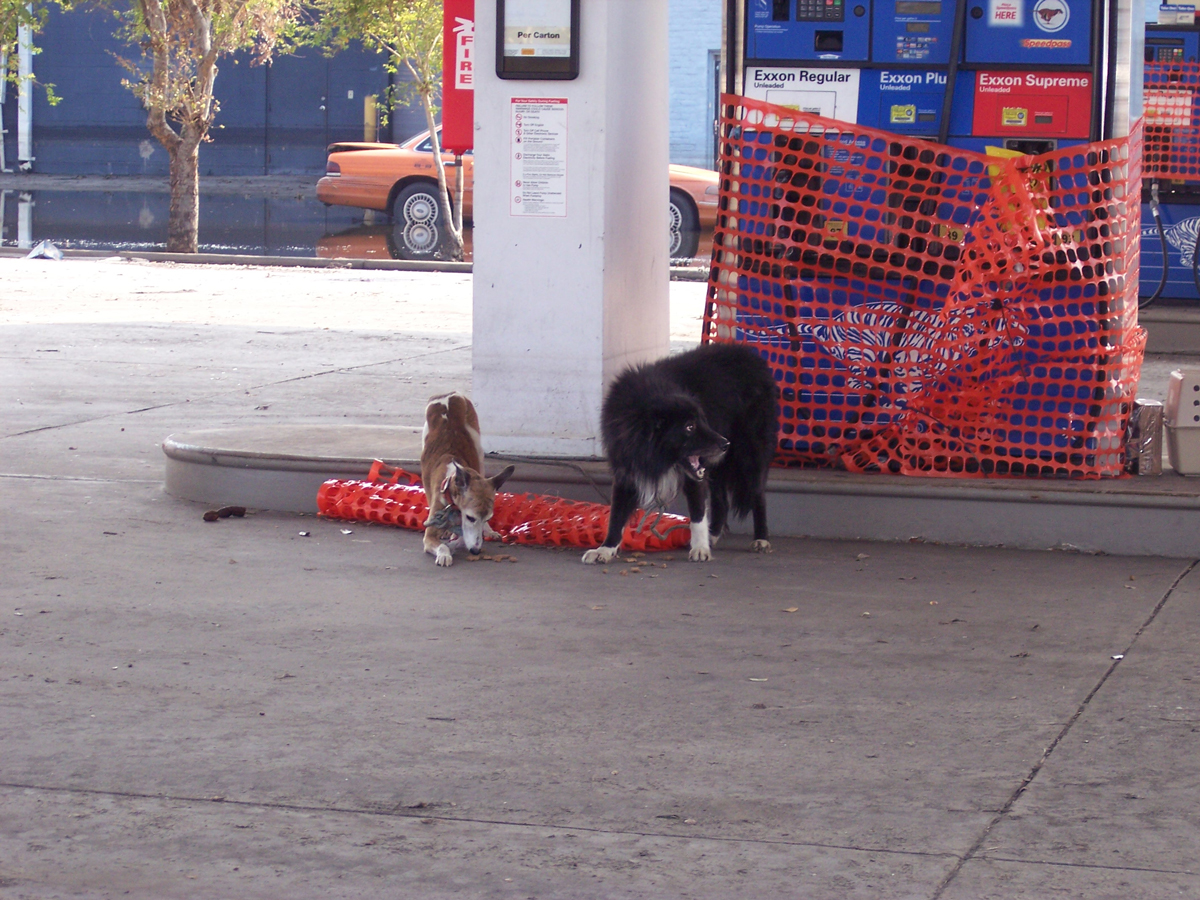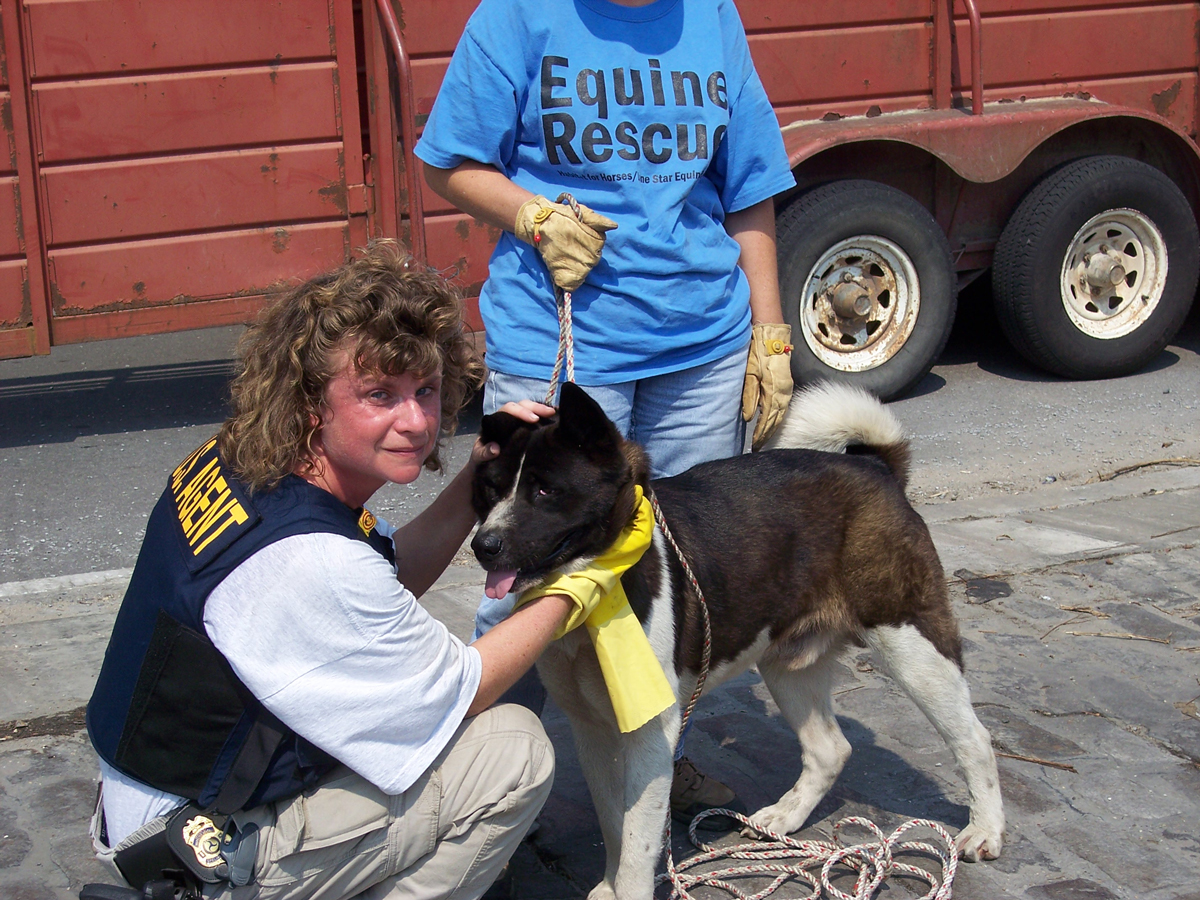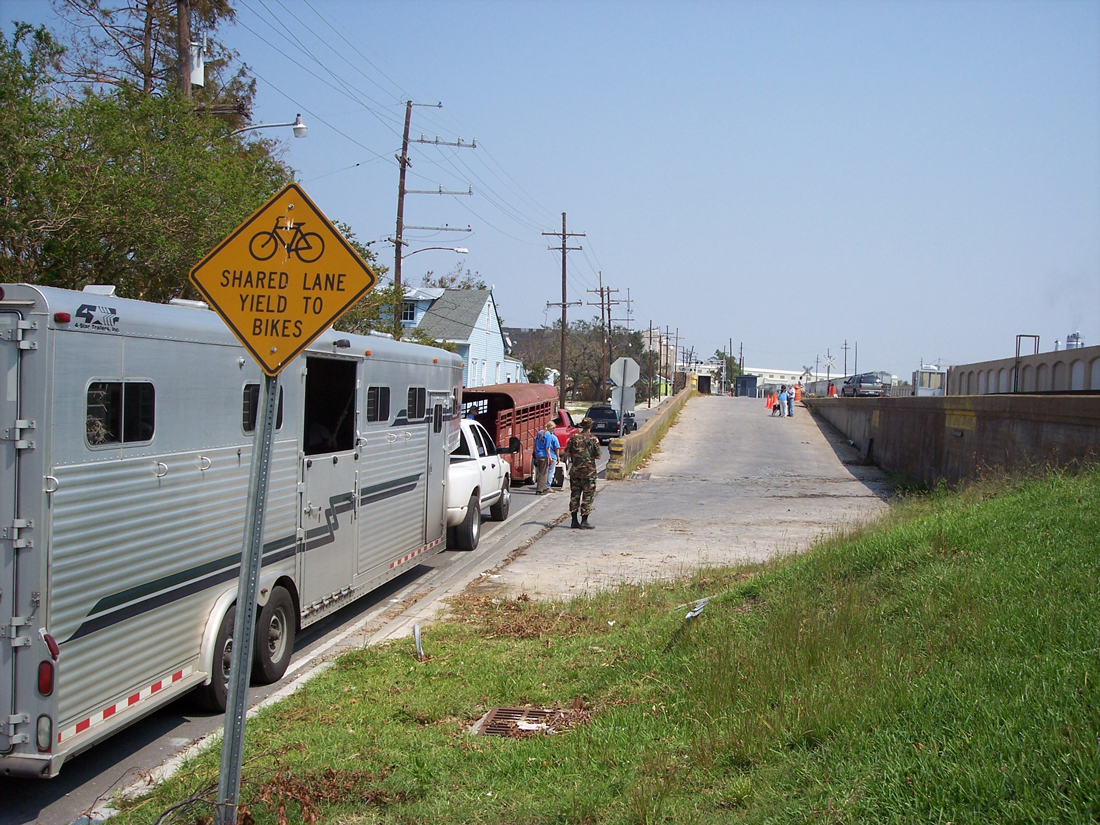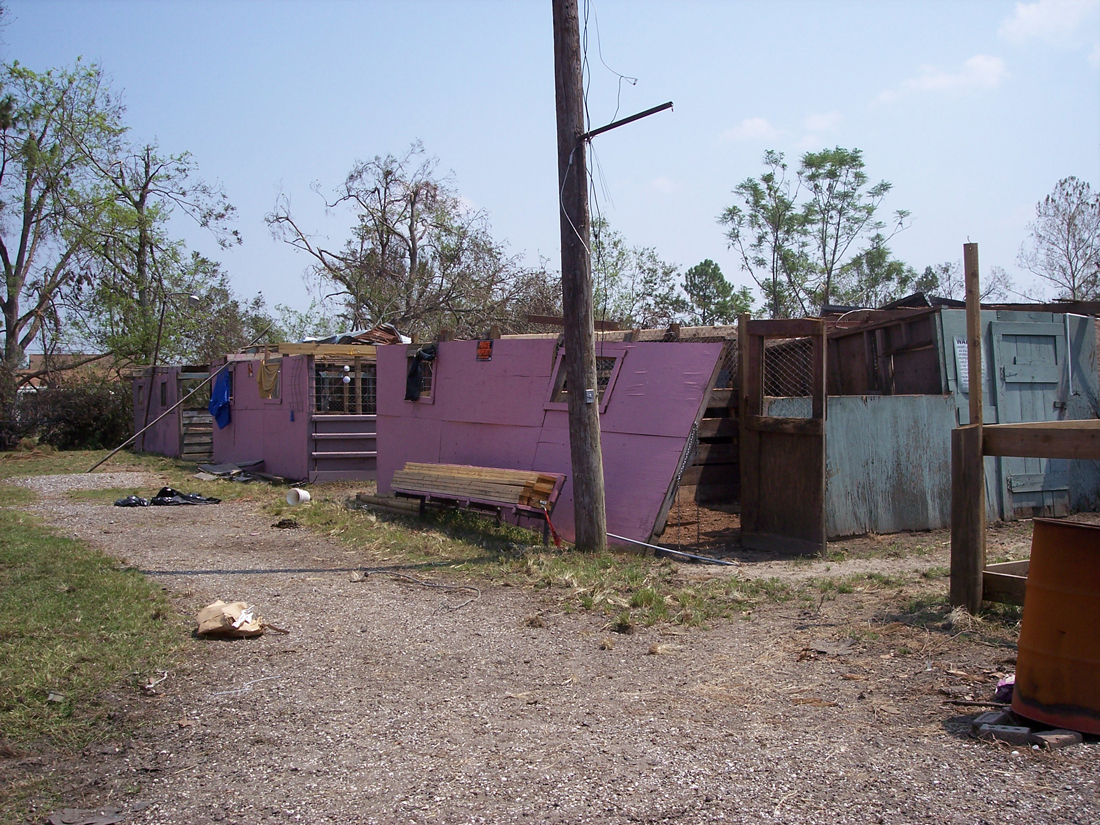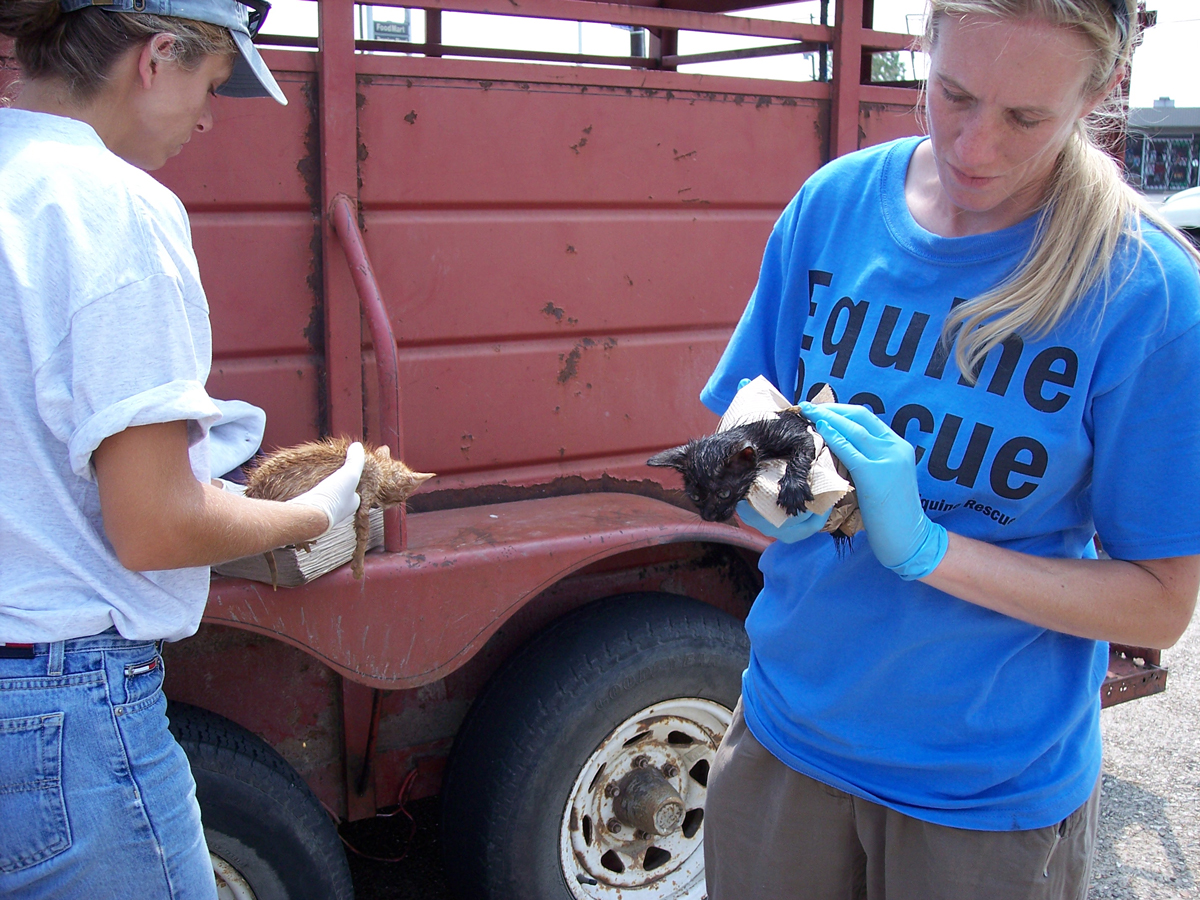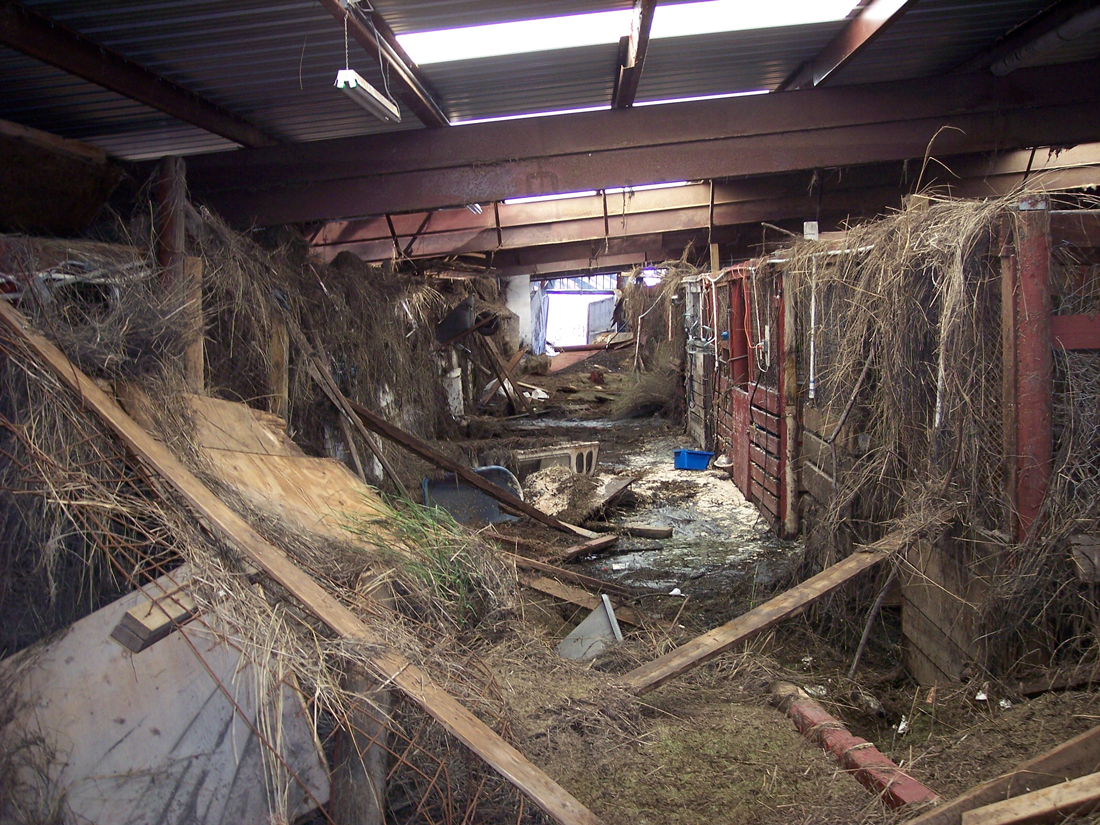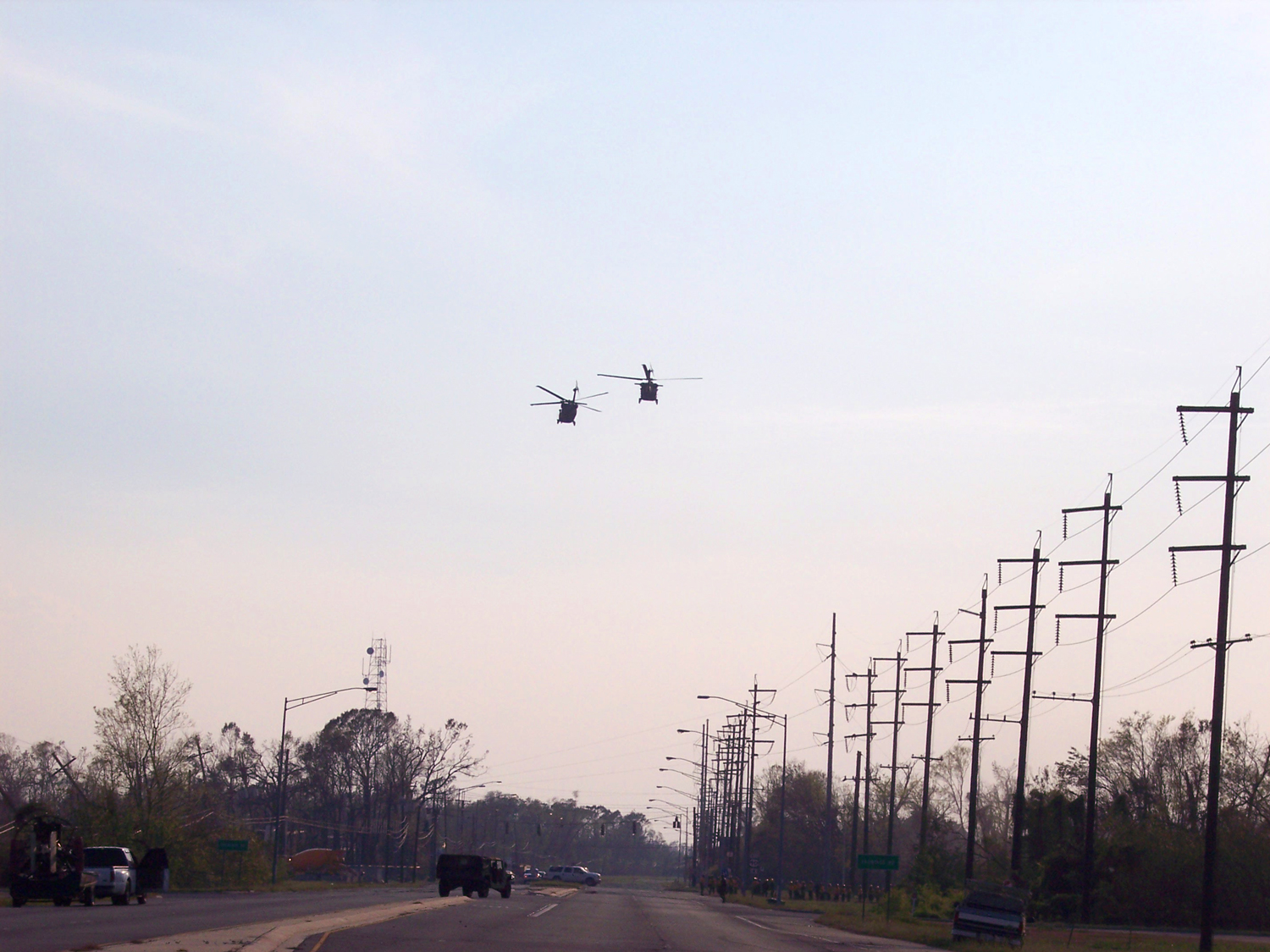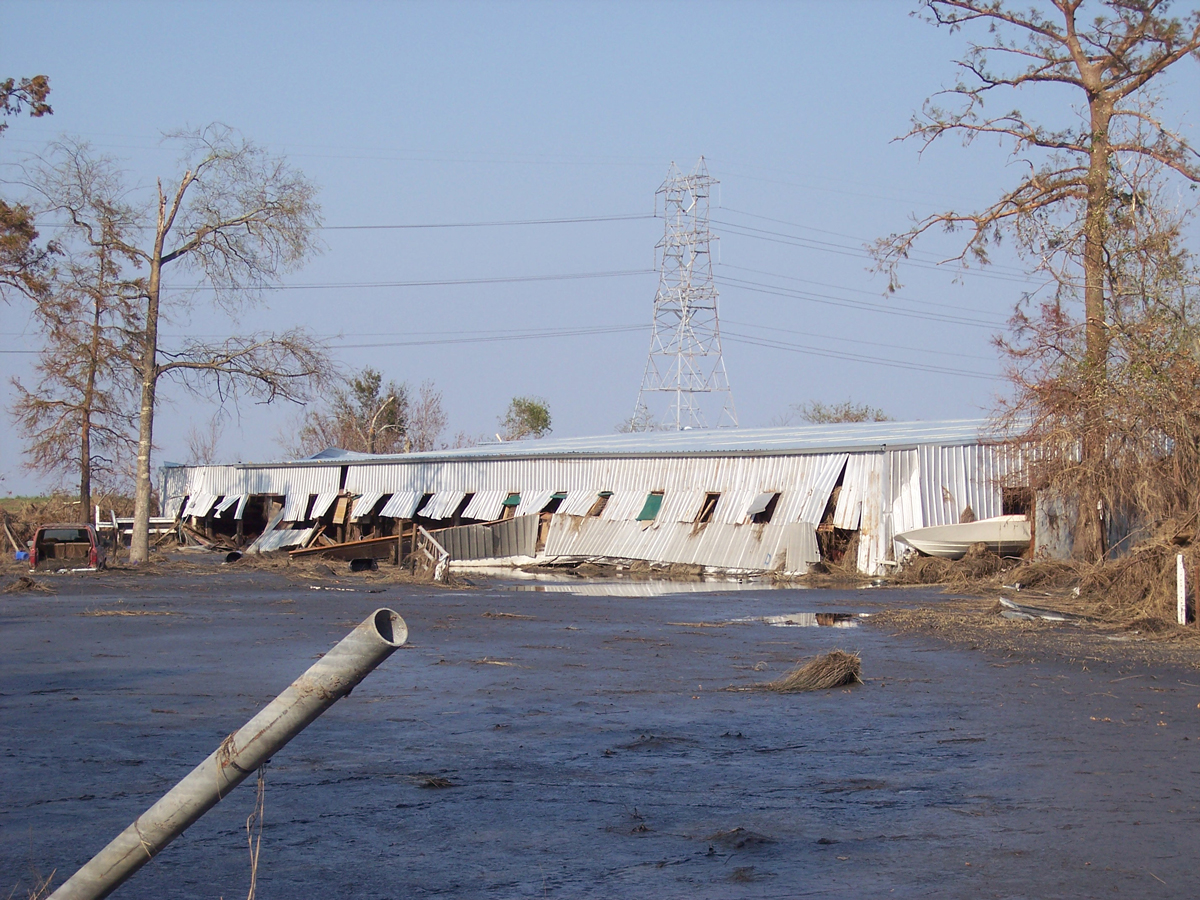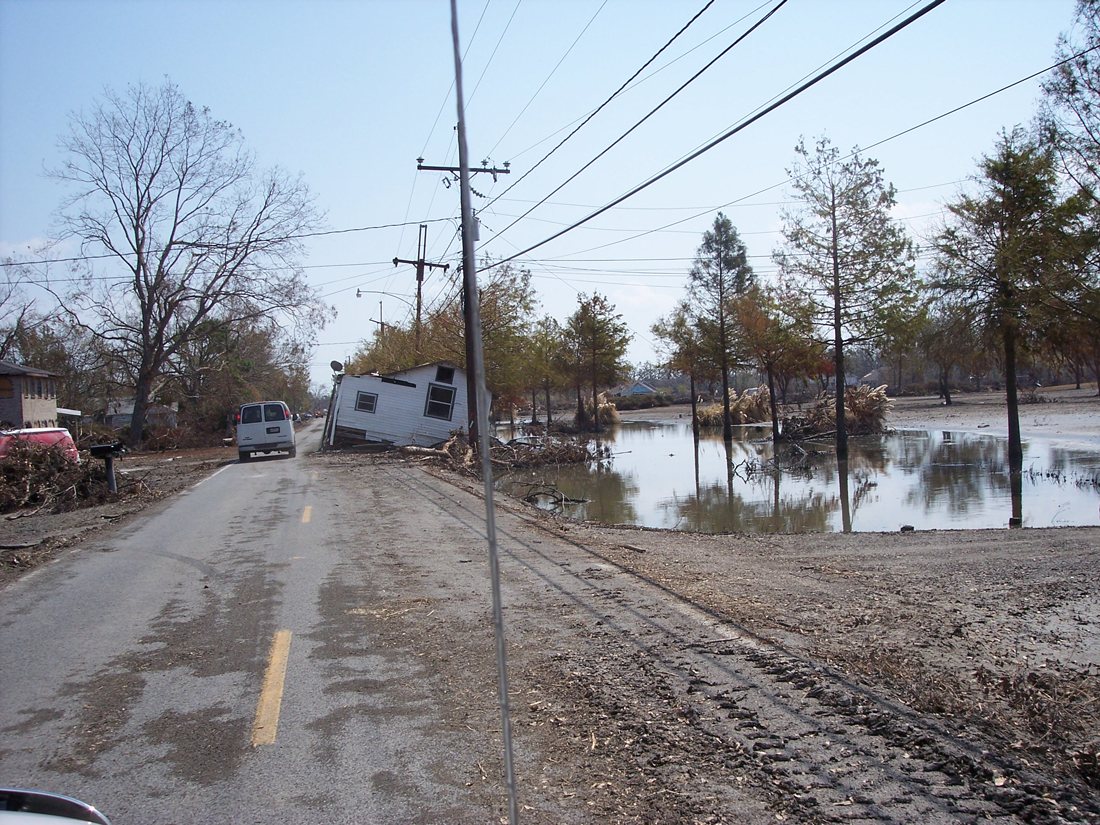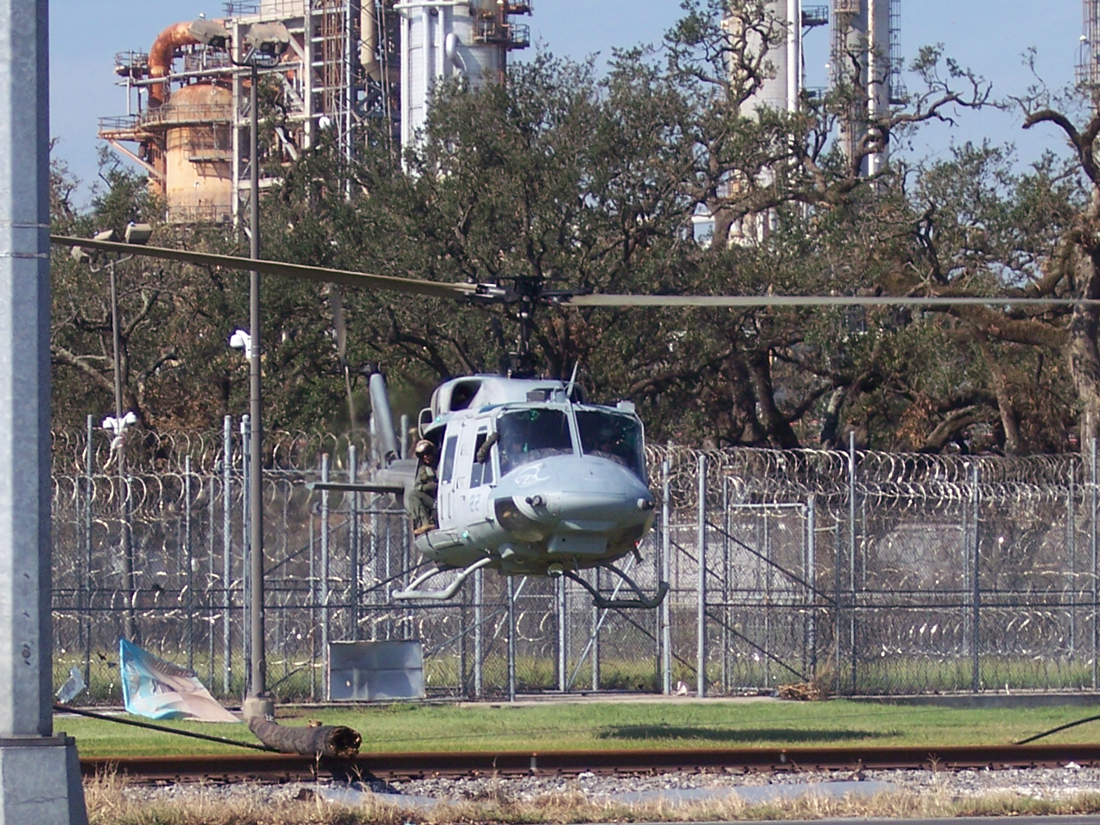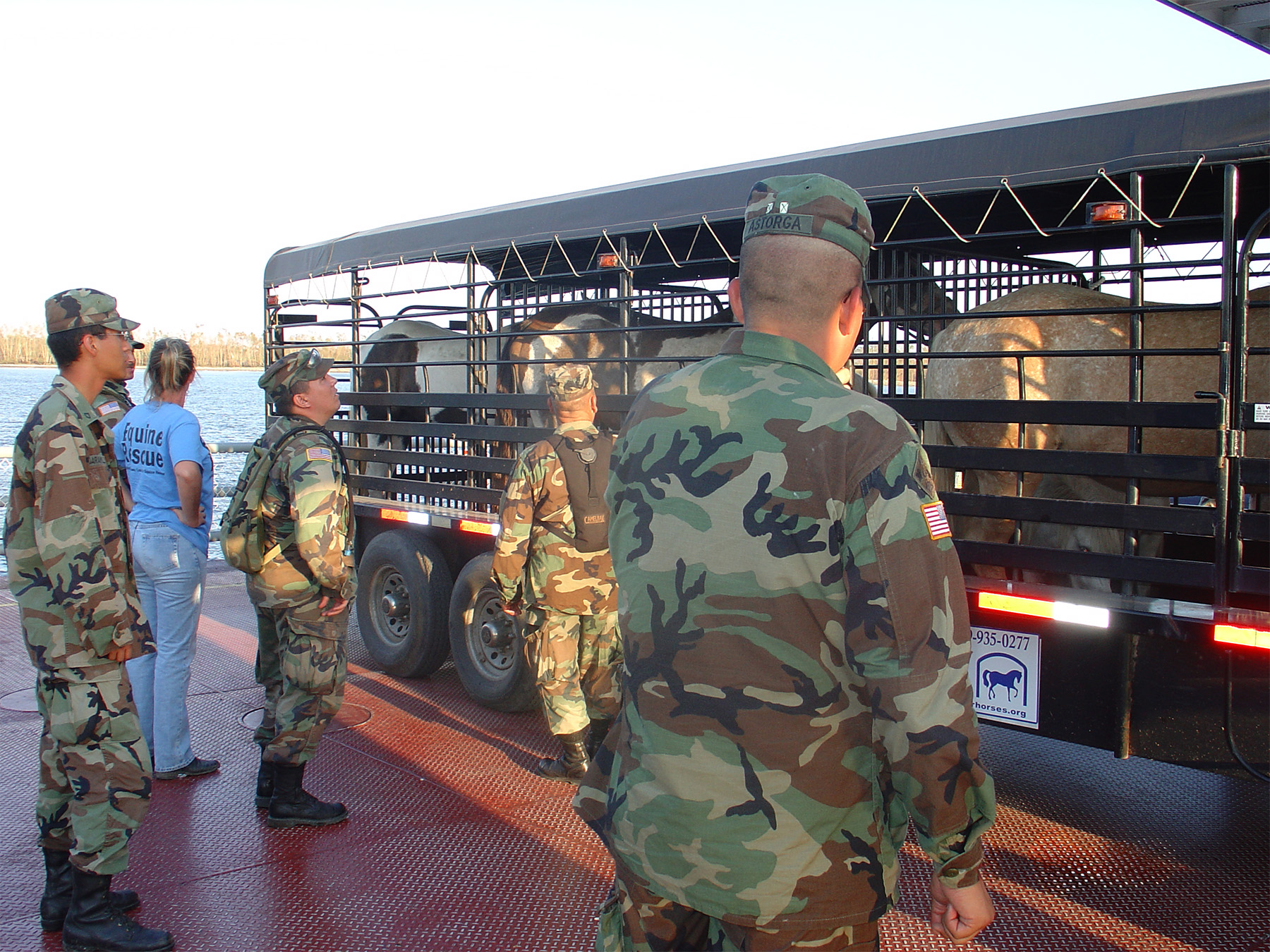20 Years after Katrina
Dr. Neil Henderson (LSU Vet Med 1995) rescuing a beagle on the highway.
By Sandra Sarr
Hurricane Katrina was a watershed moment that changed how the U.S. handles animals in disasters. It led to the Pet Evacuation and Transportation Standards Act (PETS Act), better disaster planning, wider use of microchipping, and stronger coordination among agencies—ultimately making emergency responses more humane for pets and the people who love them. This watershed moment also directly impacted LSU School of Veterinary Medicine, which performed a vital role in animal rescue, care, medical treatment, and reuniting animals with owners. Twenty years after the storm, we offer 20 LSU Vet Med vignettes from people describing what it was like when animals needed our help most.
20 heroic tales of people helping animals
Katrina's Wake: How a hurricane changed animal welfare
The Pet Evacuation and Transportation Standards Act (PETS Act) is a federal law that was passed in 2006 shortly after Hurricane Katrina. Reports suggest that people were reluctant to evacuate without pets, and little planning was previously done for pet transport and sheltering in disasters. Now, for states, cities, and counties to receive federal funding for their disaster relief plans, those plans must “account for the needs of individuals with household pets and service animals before, during, and following a major disaster or emergency.” Since then, more than 30 states have amended their disaster relief plans to account for the needs of companion animals and service animals. The Act allows the Federal Emergency Management Agency (FEMA) to provide funding to states and localities for the creation, operation, and maintenance of pet-friendly emergency shelters, along with other emergency preparedness actions for companion and service animals. FEMA is also permitted to reimburse state and local governments for rescuing, caring for, and sheltering animals in an emergency.
In the wake of Hurricane Katrina, Emmet and Toni Stephenson made a gift to LSU of $25 million, which helped fund the Stephenson Disaster Management Institute to save lives of people and animals by continuously improving disaster management through leadership in applied research and executive education. The gift also included funding to help create LSU Vet Med’s Stephenson Pet Clinic, a 40,000-square-foot facility that is home to our companion animal wellness efforts and many of our clinical services, including community practice (primary care), dermatology, integrative medicine, and ophthalmology. The clinic was built with a combination of major gifts, including one from Kenneth Windheim, state funds and $4 million in private funds from more than 300 individual donors, with the primary donors being Emmet and Toni Stephenson. When the Stephenson Pet Clinic opened in 2022, Emmet Stephenson said, “Toni and I greatly appreciate the excellent care that LSU Vet Med provides to sick and injured animals, and we respect the ground-breaking medical research performed by the faculty and doctoral candidates.” The Stephensons first approached the School of Veterinary Medicine after Hurricane Katrina. They were watching a cable news program and saw a story about Best Friends Animal Society, which was one of many groups rescuing animals after the storm. The Stephensons decided to contact Best Friends to see how they could help. When they called the organization, a recording instructed them to contact Louisiana State University School of Veterinary Medicine. They did so and made a sizeable donation to the Spirit of Veterinary Medicine Hurricane Relief Fund.
The Louisiana State Animal Response Team (LSART) was just being formed under the guidance of the Louisiana State Veterinarians' Office when Hurricane Katrina put it to the test. Dr. Renee Poirrier (LSU Vet Med Class of 1988), director, and Dr. Martha Littlefield, assistant state veterinarian (LSU Vet Med Class of 1982), managed rescue shelters, evacuation shelters, and credentialed rescue operations. LSART grew from there and has responded to hurricanes, floods, oil spills, and individual incidents. LSART has also partnered with other animal allies and strives to help create a more resilient community.
Each year, LSART and LSU Vet Med join forces to offer hands-on training that strengthens disaster response skills for veterinary professionals, students and emergency responders across Louisiana and other states, marking 15 years of collaboration in advancing disaster response education. Over the course of one week, participants engage in hands-on exercises and expert-led lectures on topics like pet evacuation, large and small animal decontamination, large animal rescue, and disaster preparedness. The boot camp is recognized as one of the nation’s top veterinary disaster response programs.
Congress passed the Post-Katrina Emergency Management Reform Act of 2006 which established the Federal Emergency Management Agency as a distinct agency within the Department of Homeland Security, defined FEMA’s primary mission, and designated the FEMA administrator as the principal advisor to the President, the Homeland Security Council, and the Secretary of Homeland Security for all matters relating to emergency management in the United States.
Photo Gallery
